At St. Louis Lambert International Airport, travelers are greeted by glass screens at their gates. These works are displayed on three side-by-side glass panels, each about 5.5 feet high by 3 feet wide, for an overall glass canvas of nearly 50 square feet. Located throughout the A and C Concourses, these colorful glass screens invite travelers to reimagine their journeys, both past and present.
C Concourse
A Concourse
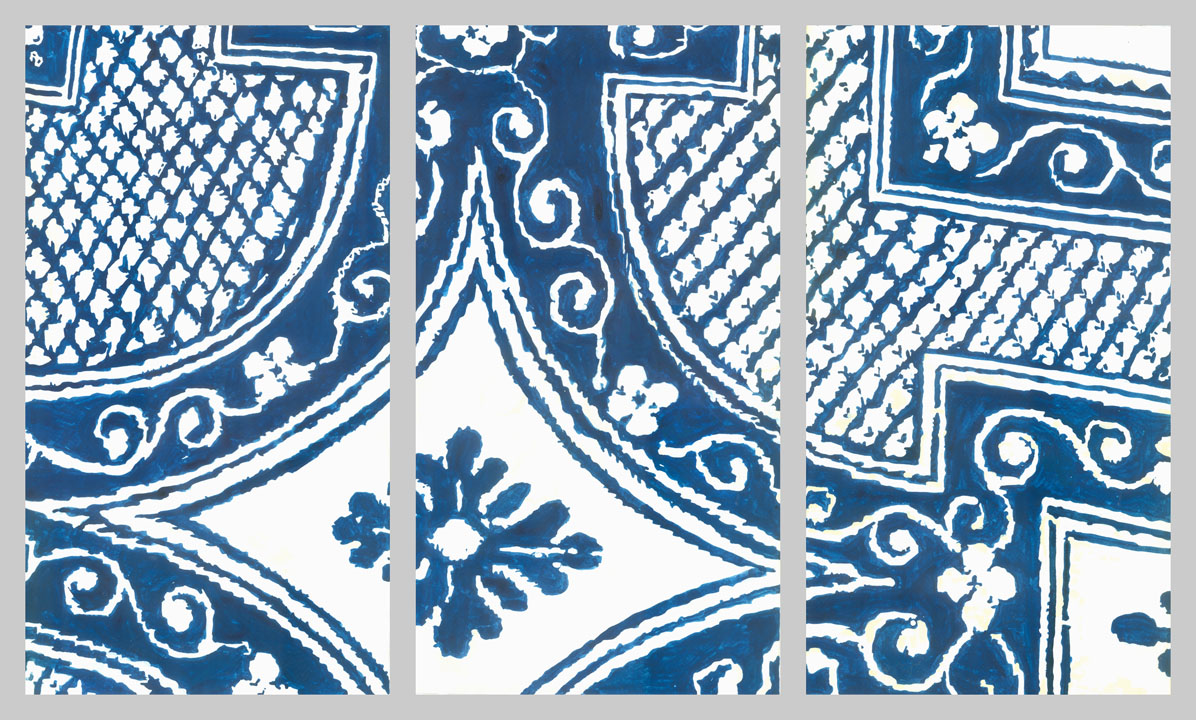
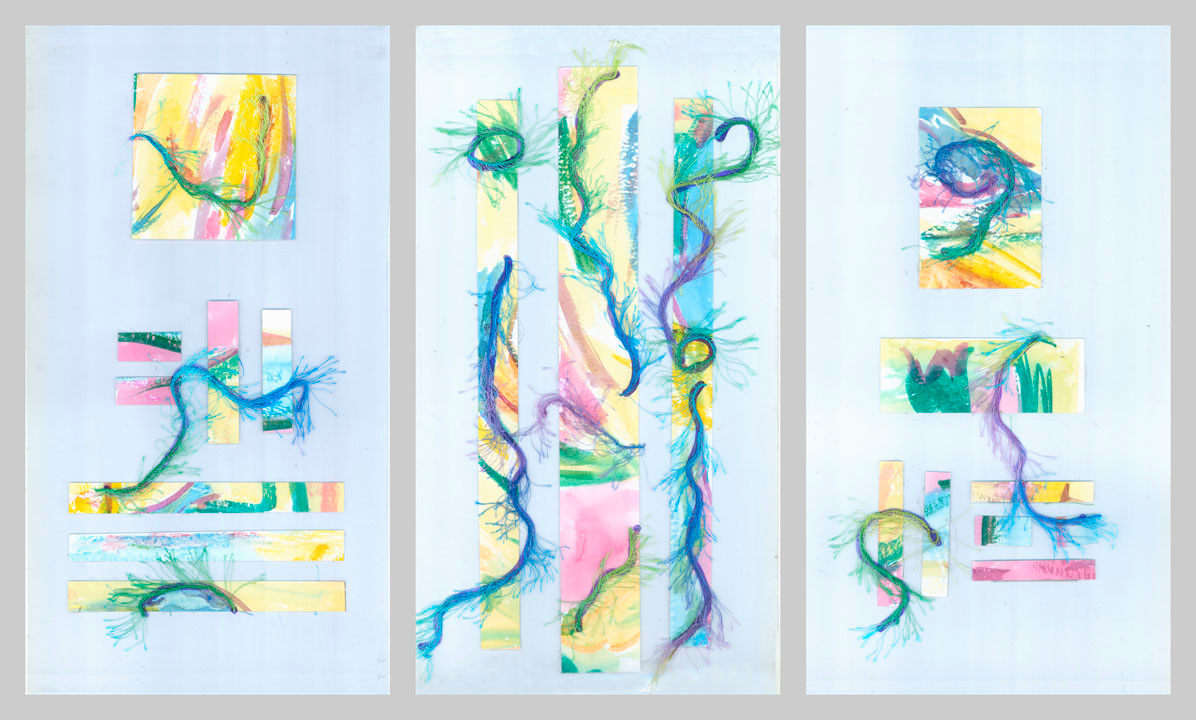
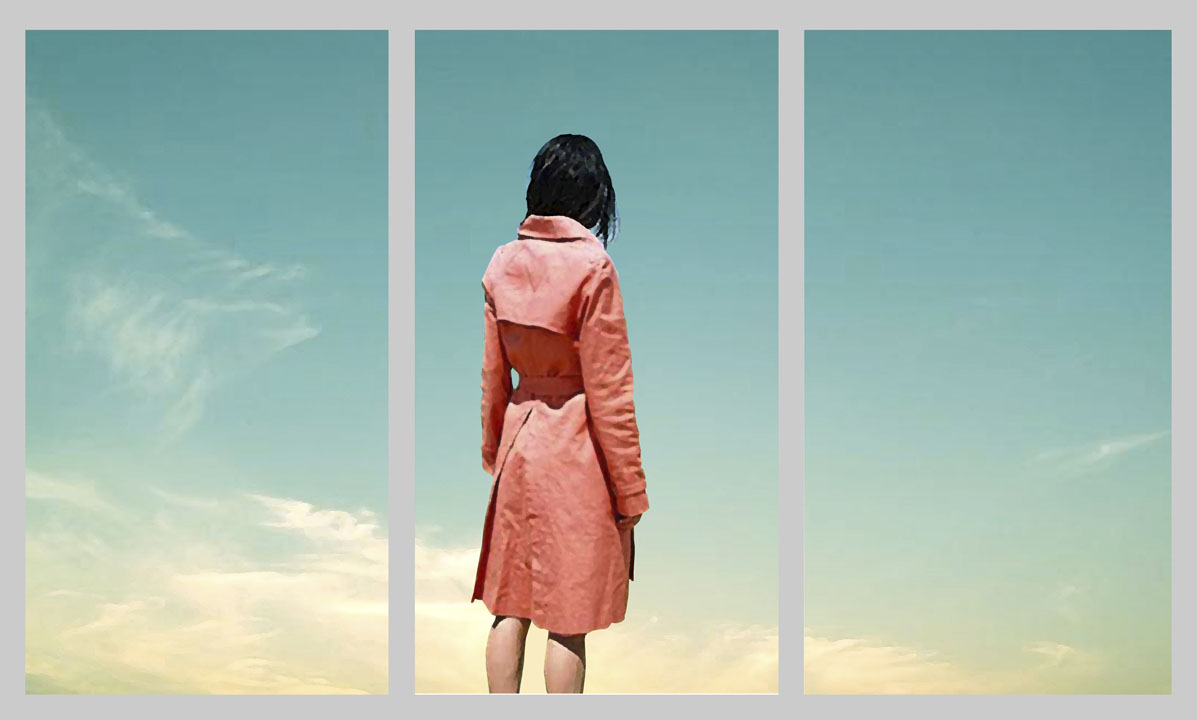
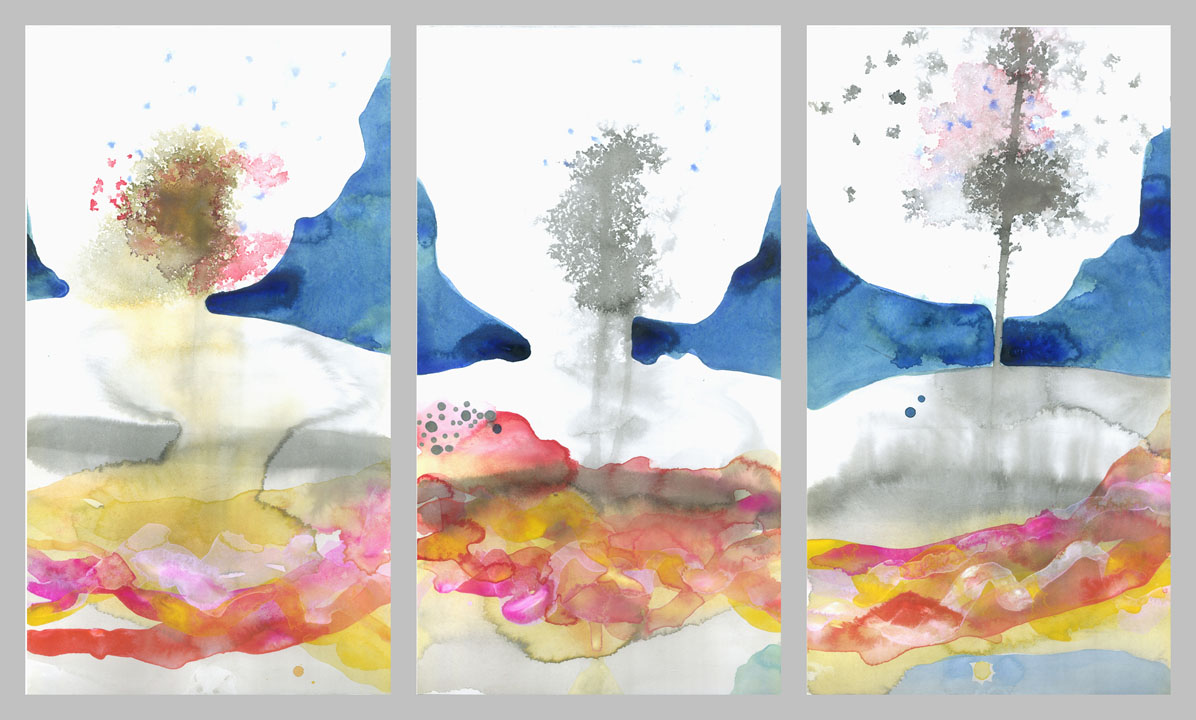
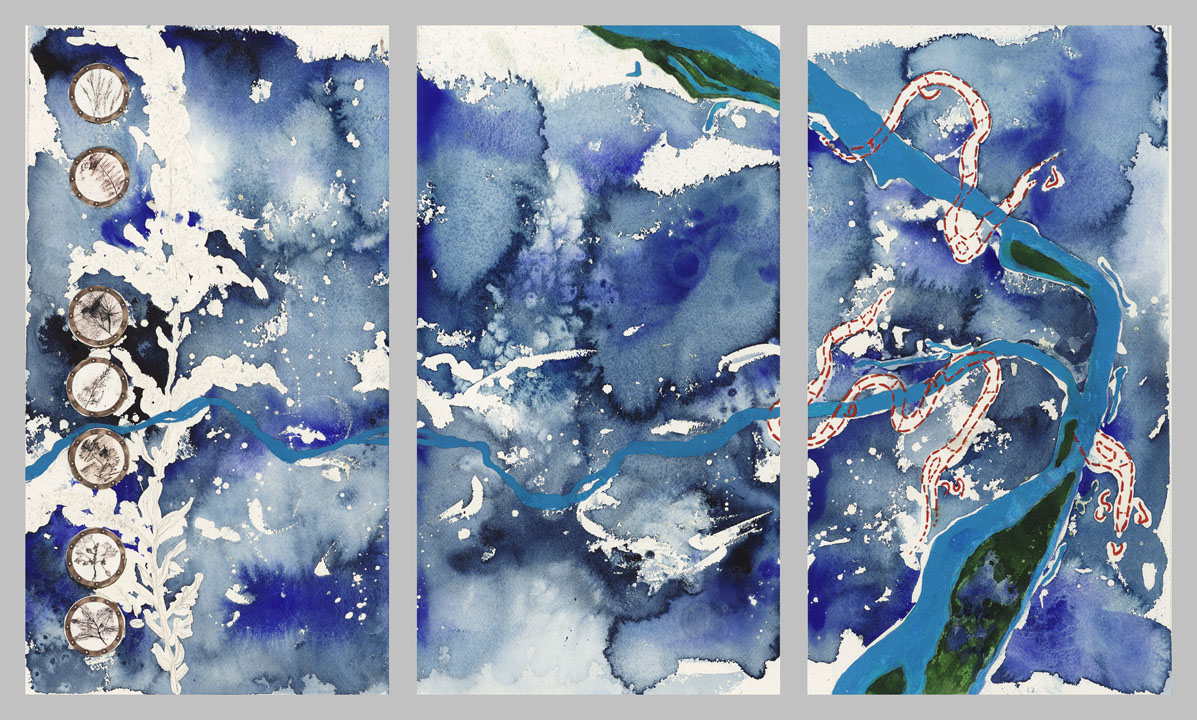
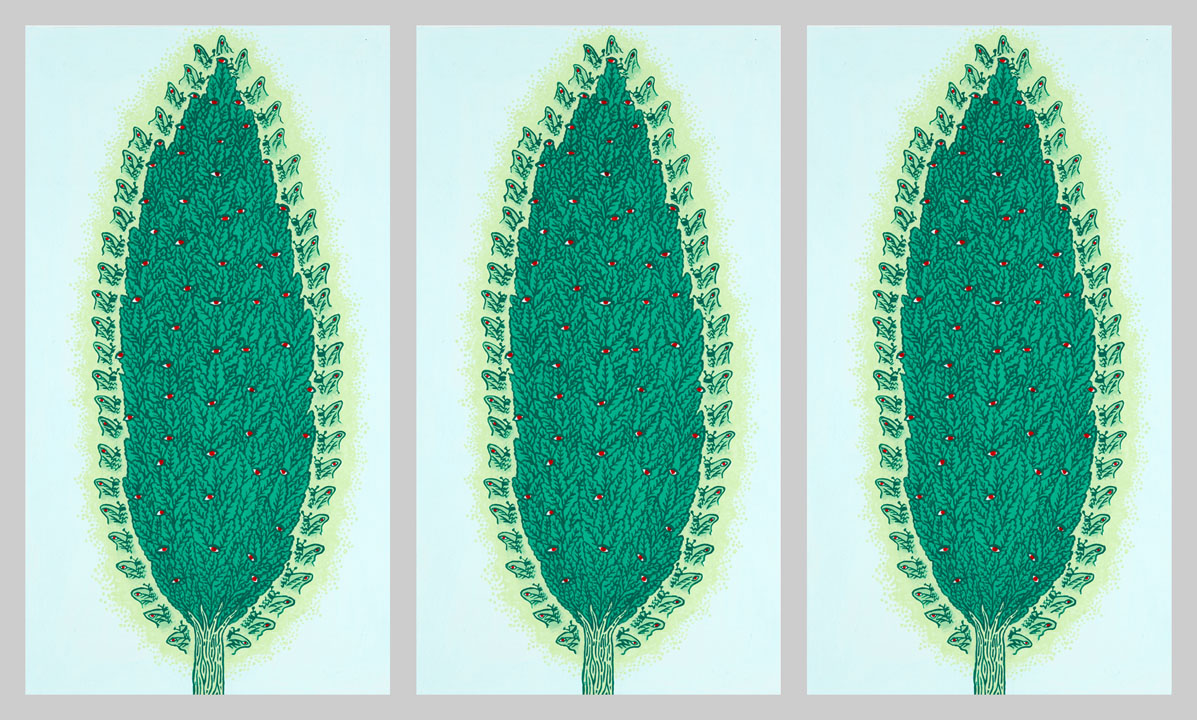
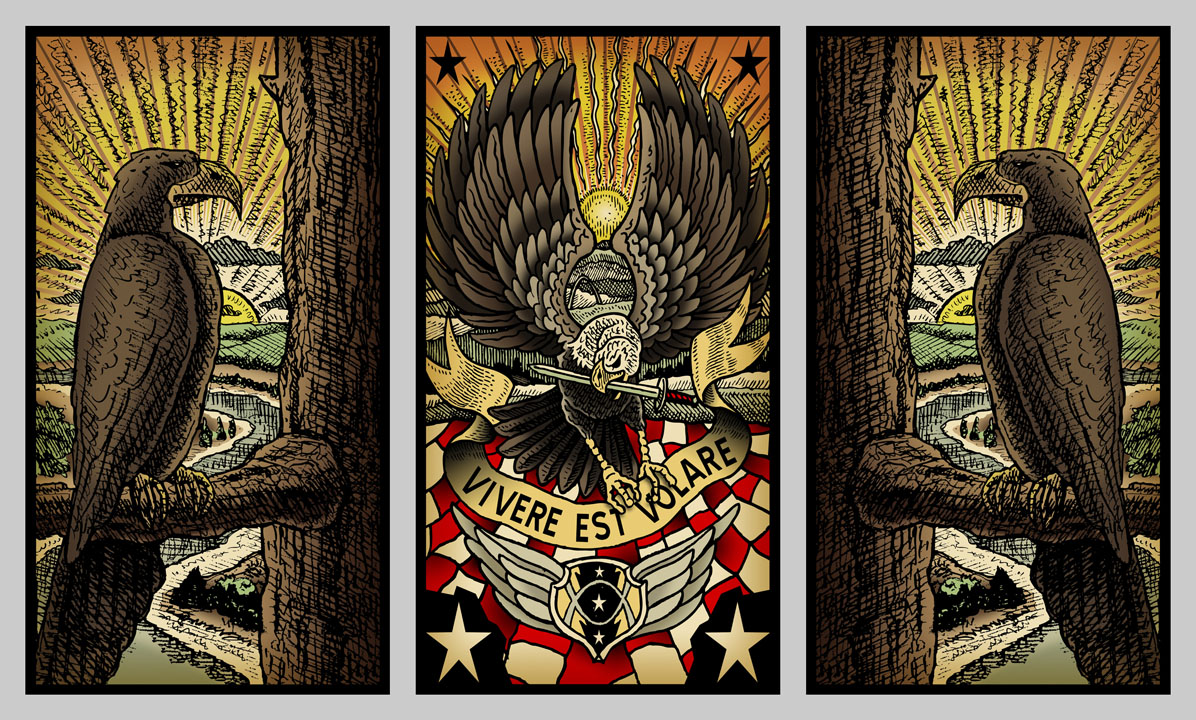


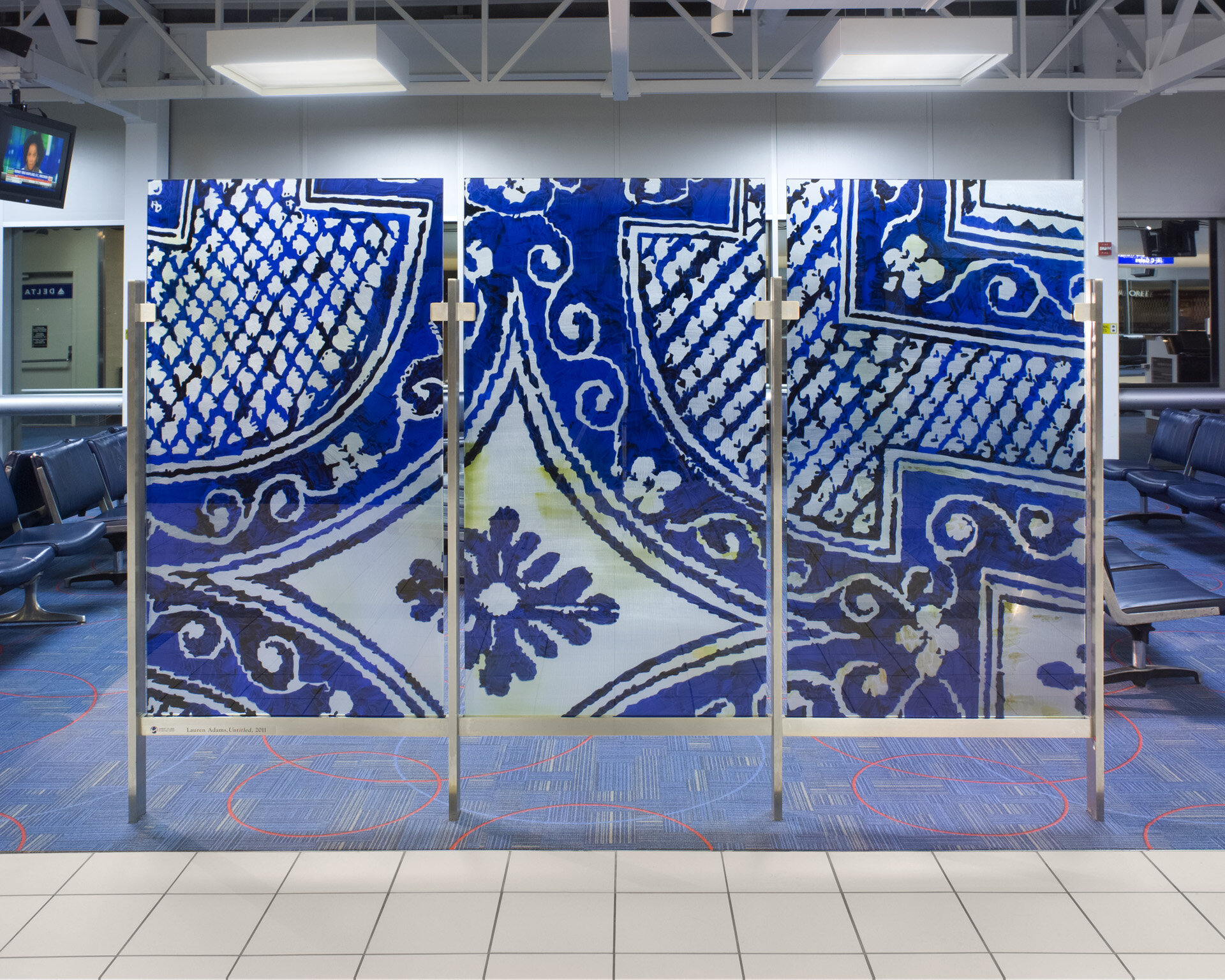
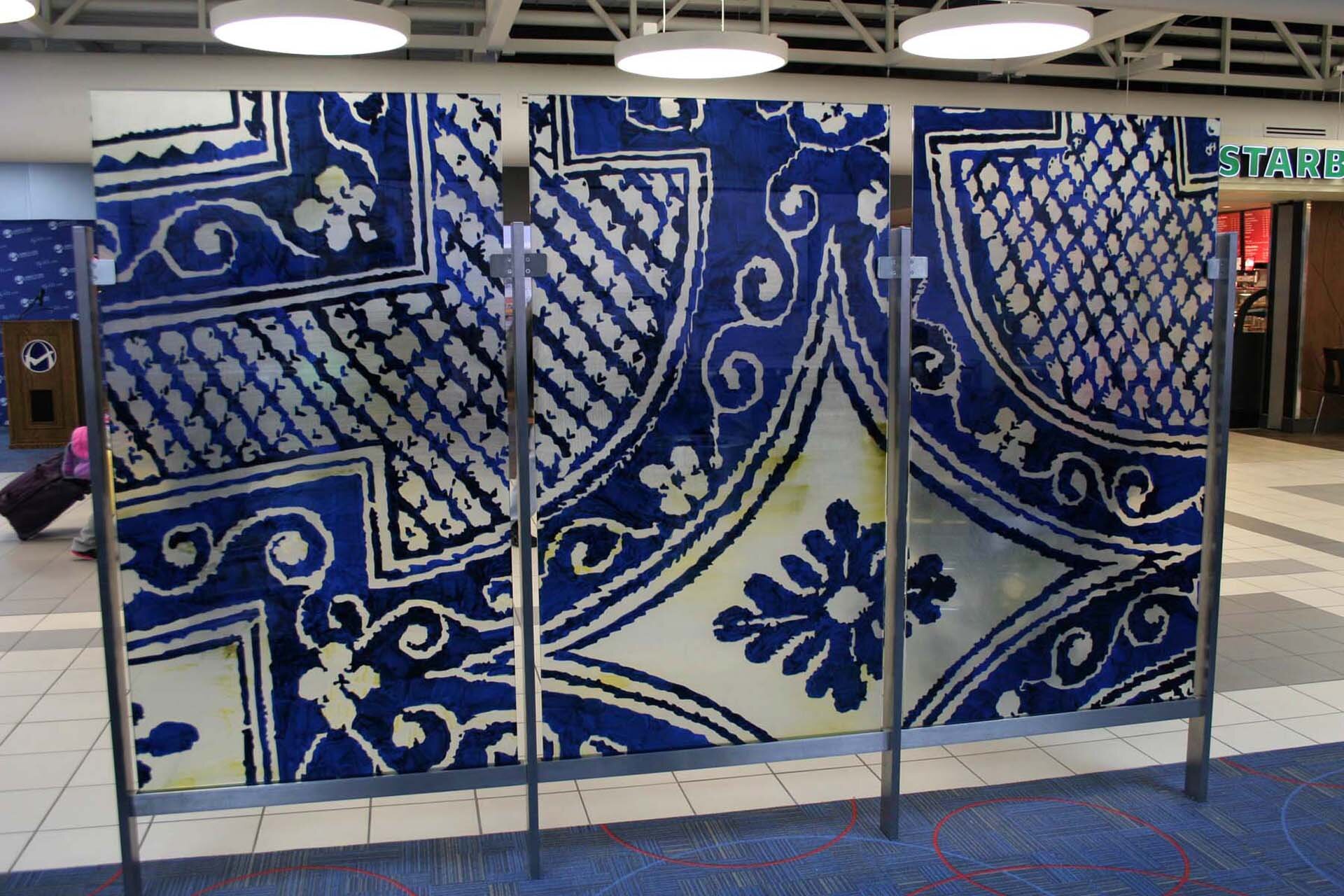
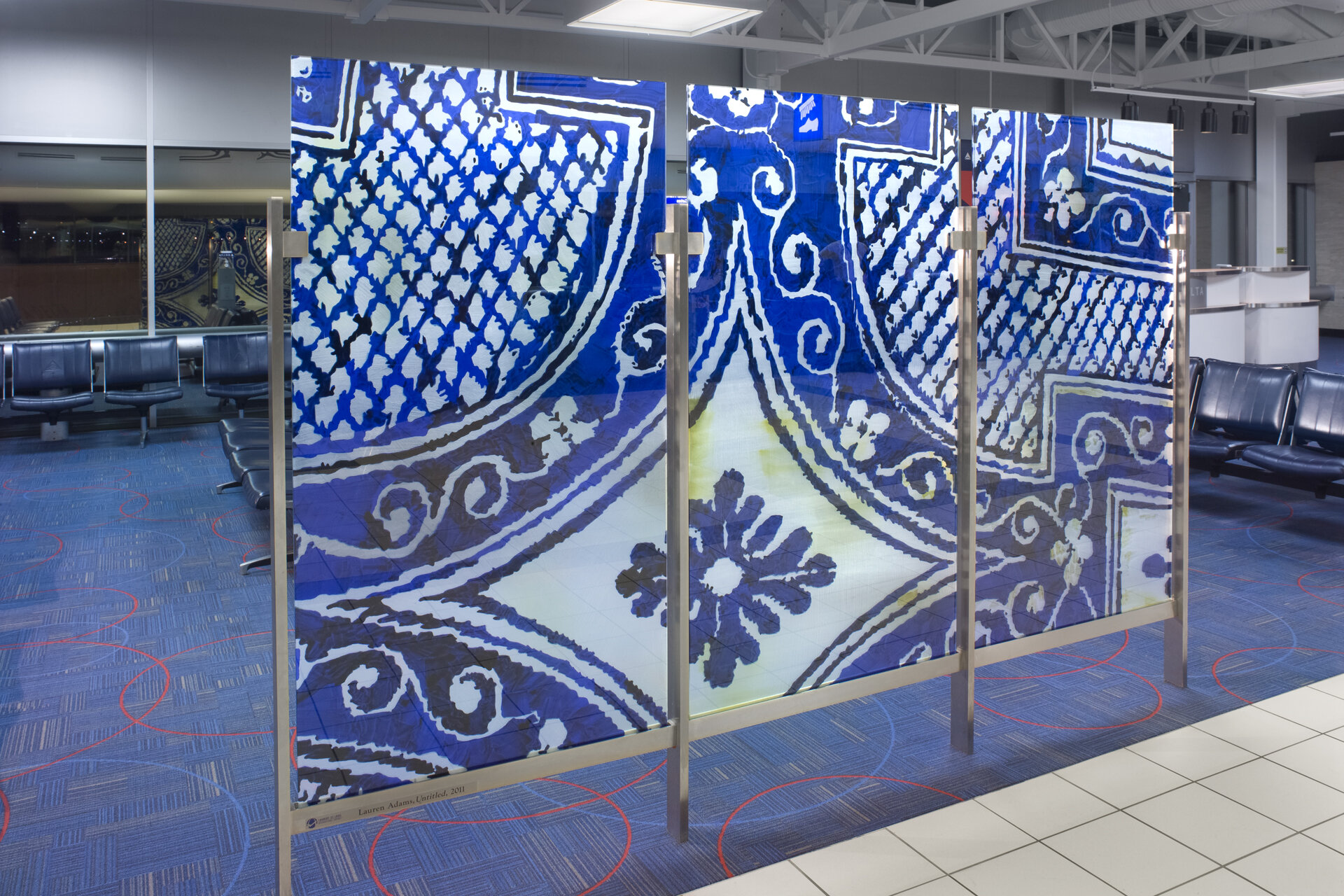
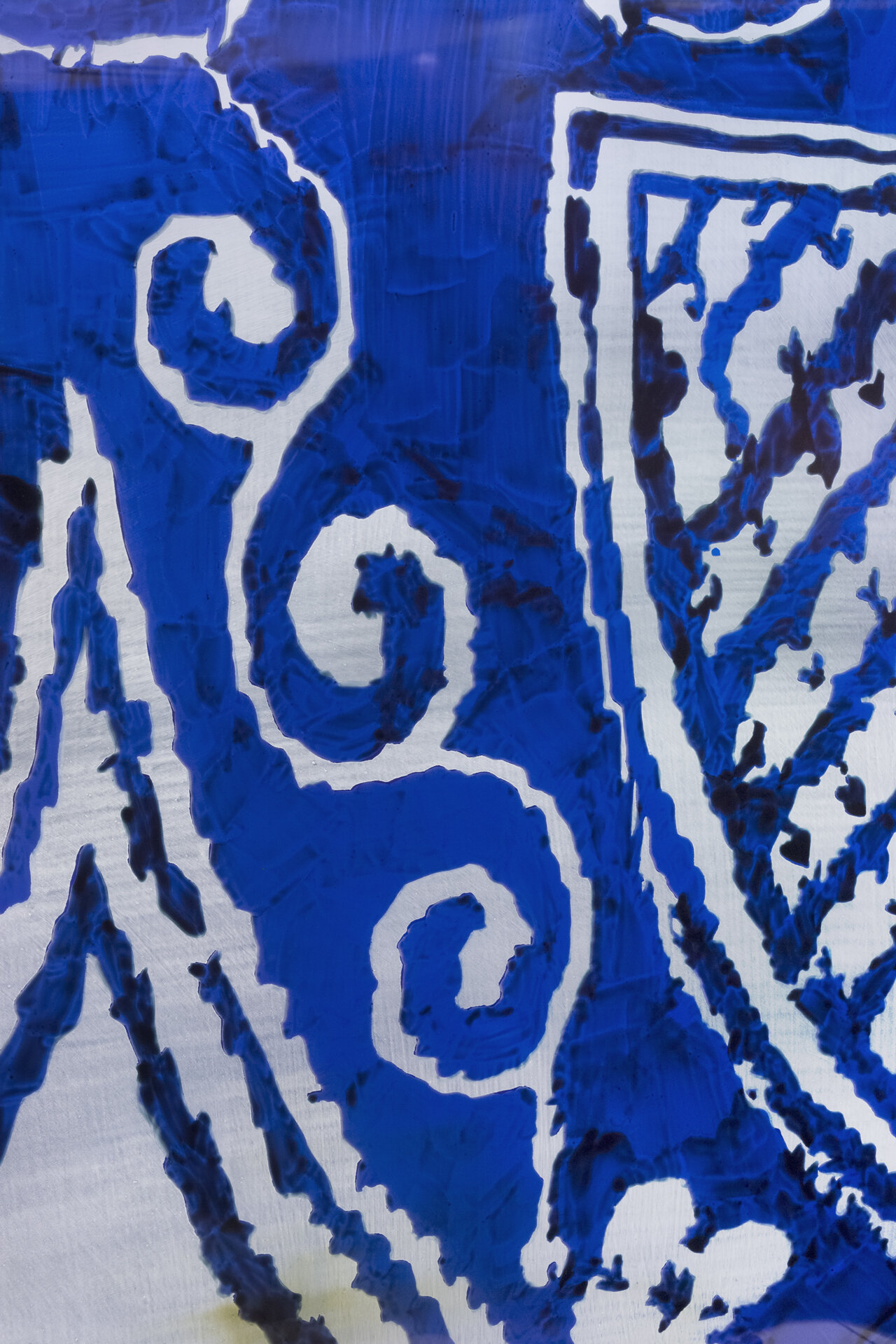
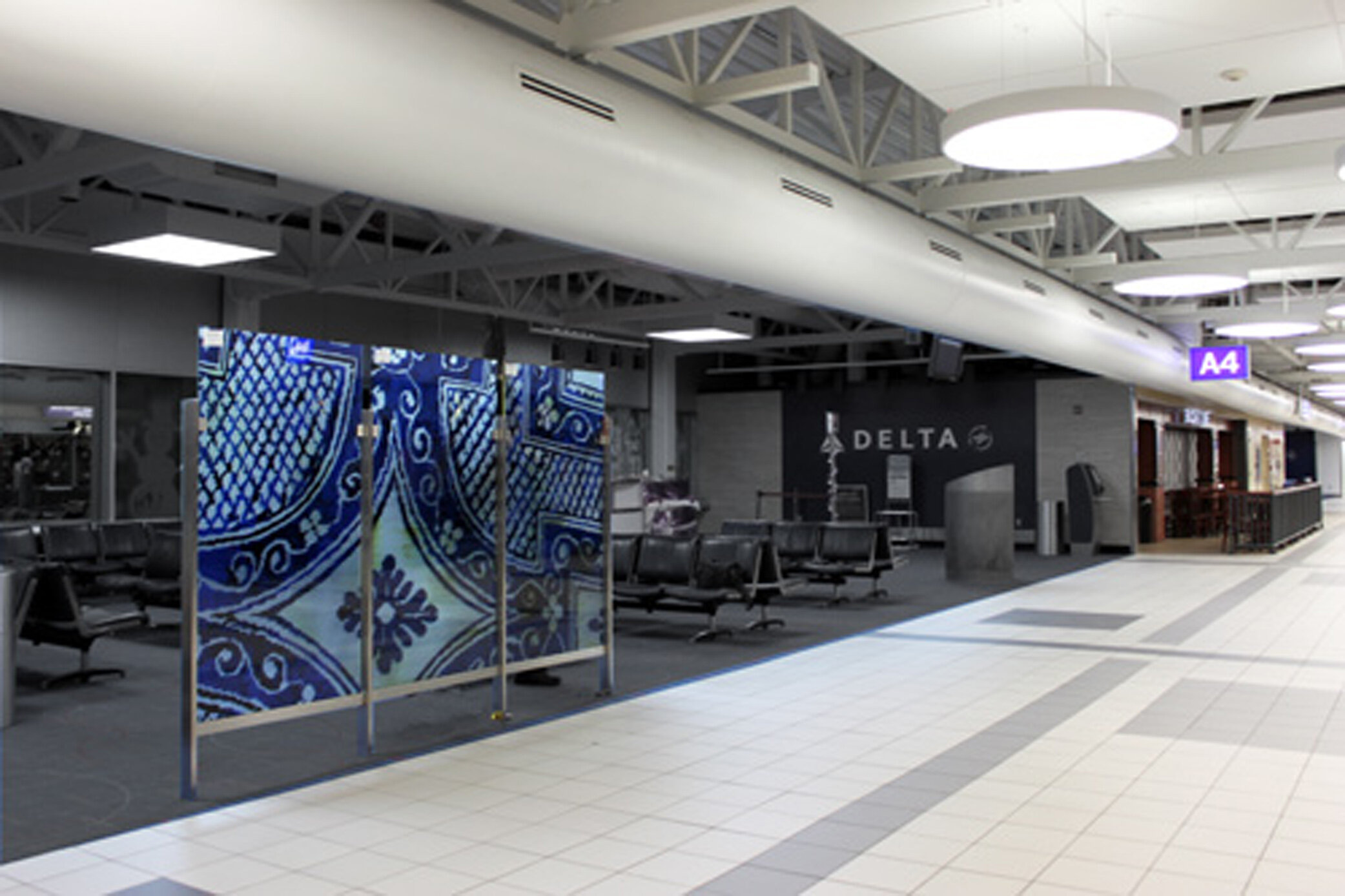
Photos by: Richard Sprengeler
Untitled by Lauren Adams (Missouri Coverlet Abstraction, 1850s to 2010)
Location: Near Gate A4
This design is based on the pattern of a woven coverlet that belonged to Betsey Cory Terhune of Nodaway County, Missouri, in the 1850s and is now in the collection of the Saint Louis Art Museum. The coverlet’s rows of tightly packed, flower-filled rectangles create a grid-like pattern that was typical of coverlets and carpets from this time. The coverlet was passed down through the Terhune family and donated to the Museum in 2003. Adams focused on one small area of the coverlet and painted an abstracted and aggrandized interpretation of the woven textures and colors. Her painting was then translated into glass. Her desire for this work is to create a contemporary awareness of the textile traditions of Missouri, within the context of the airport.
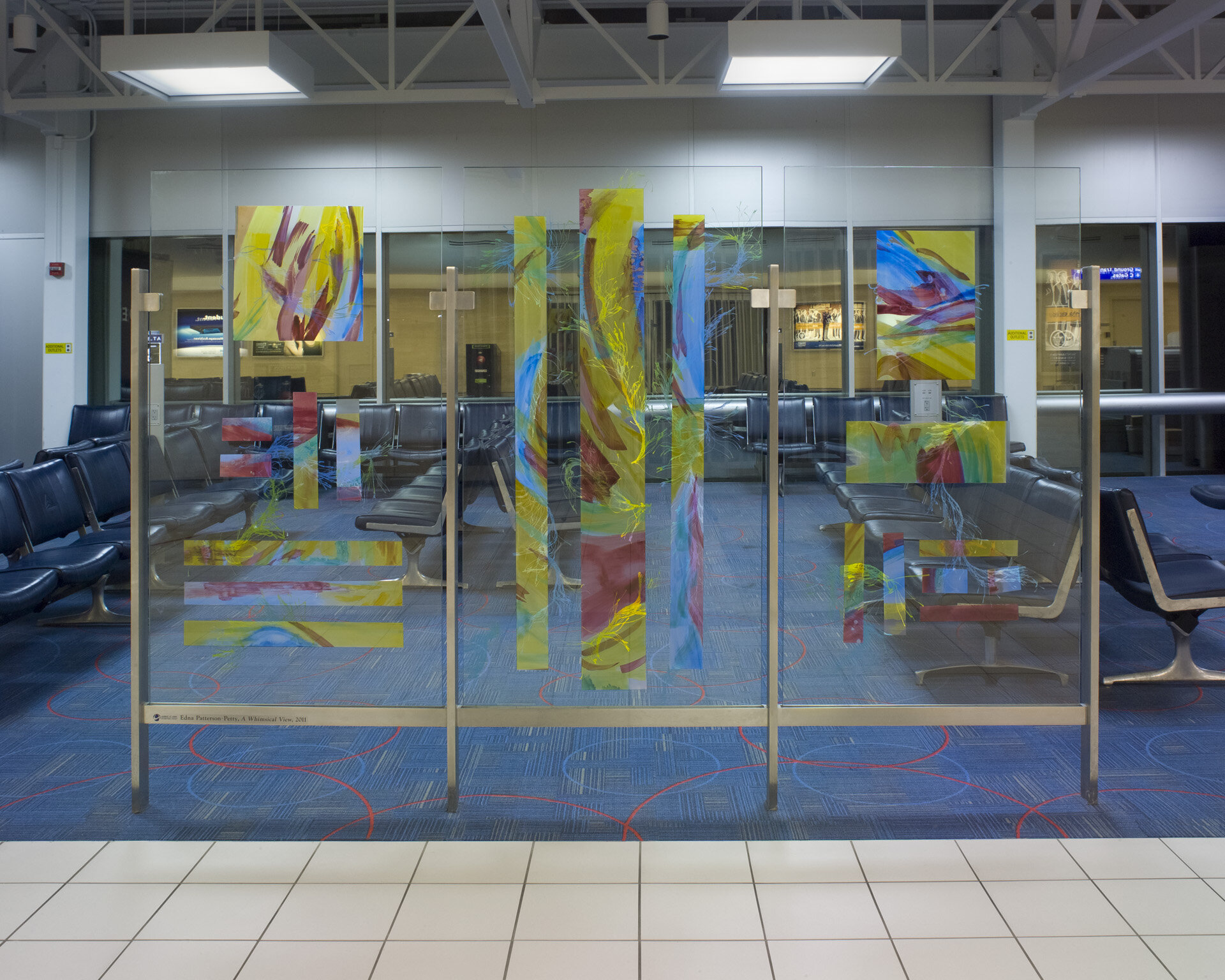
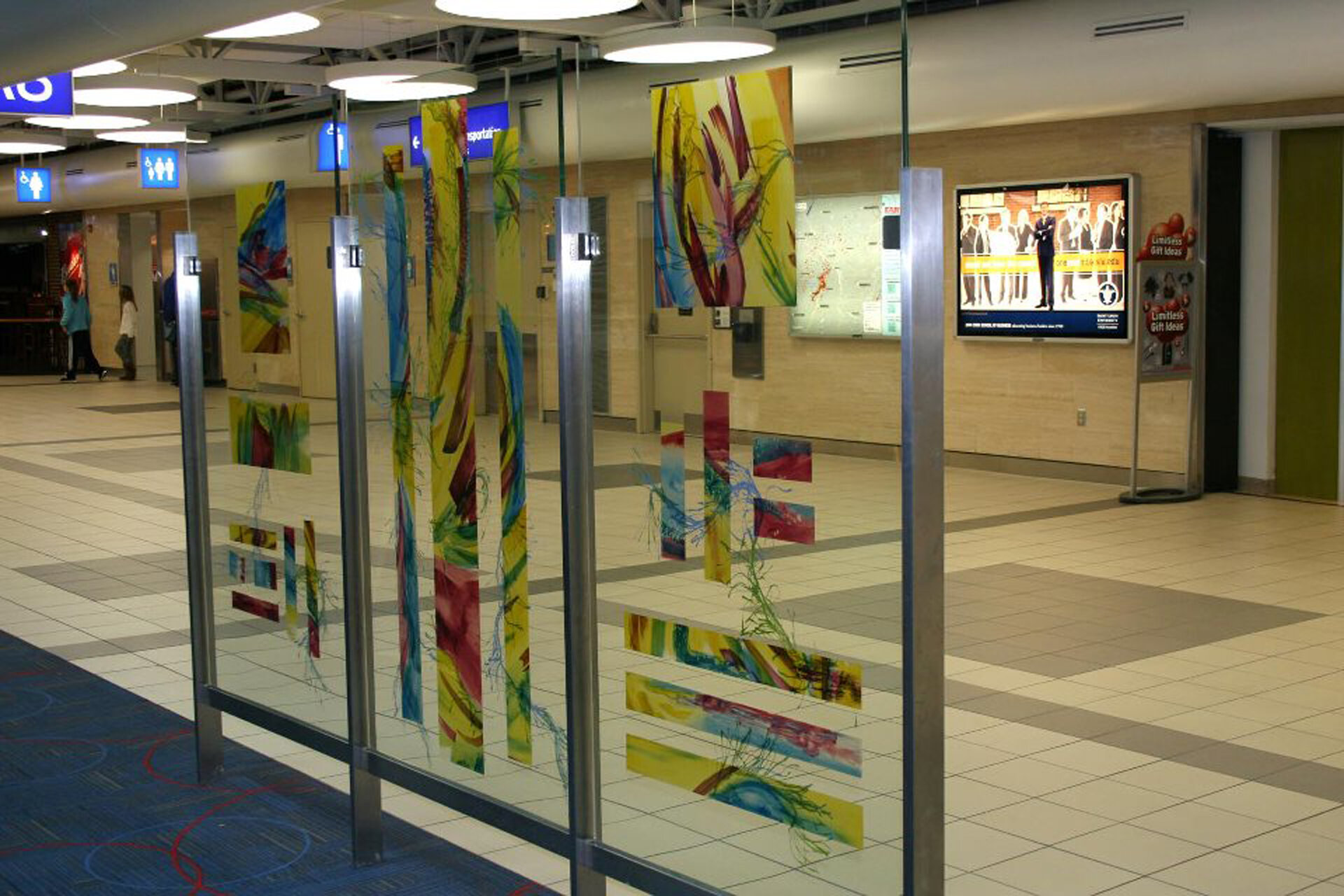
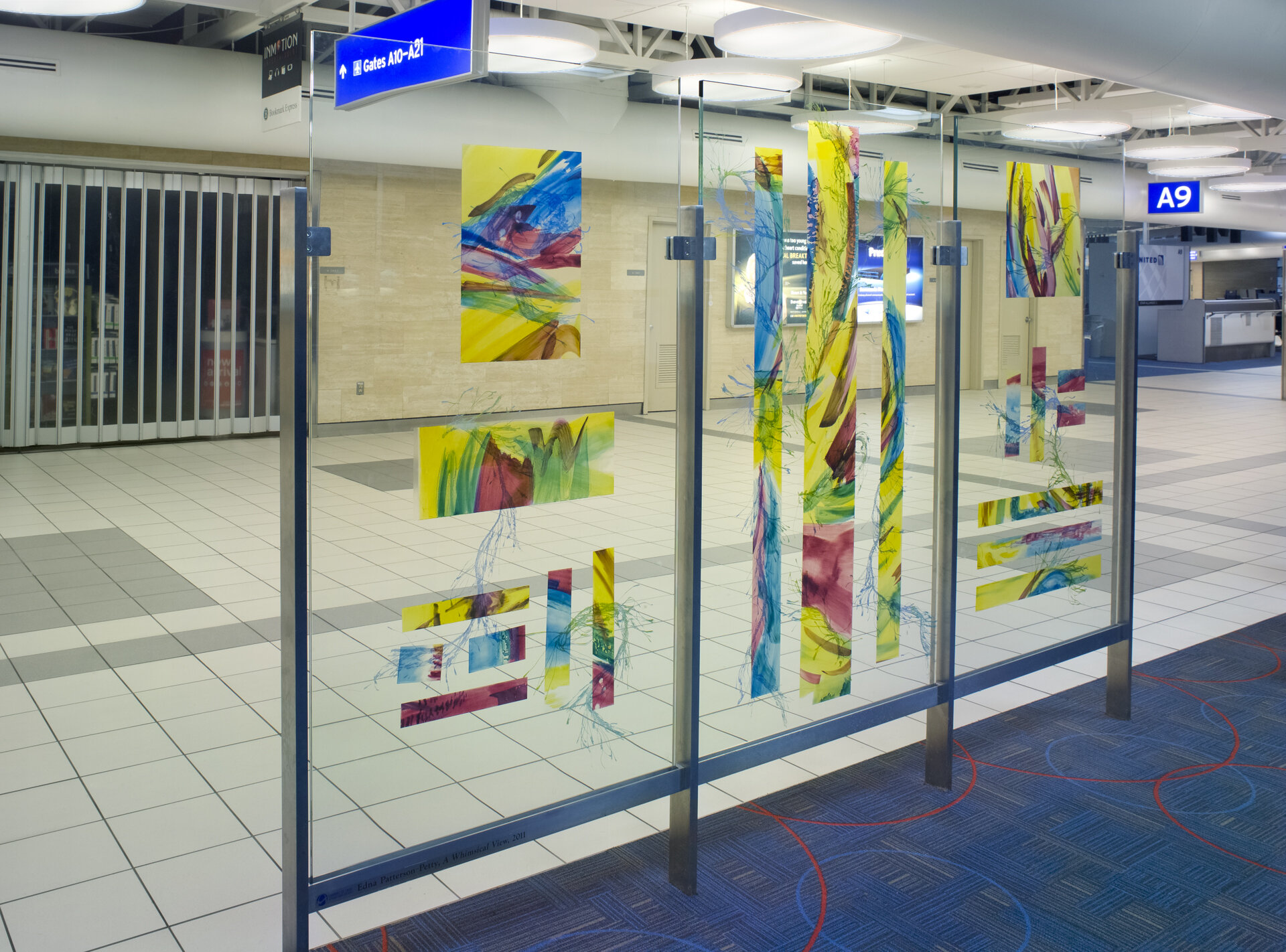
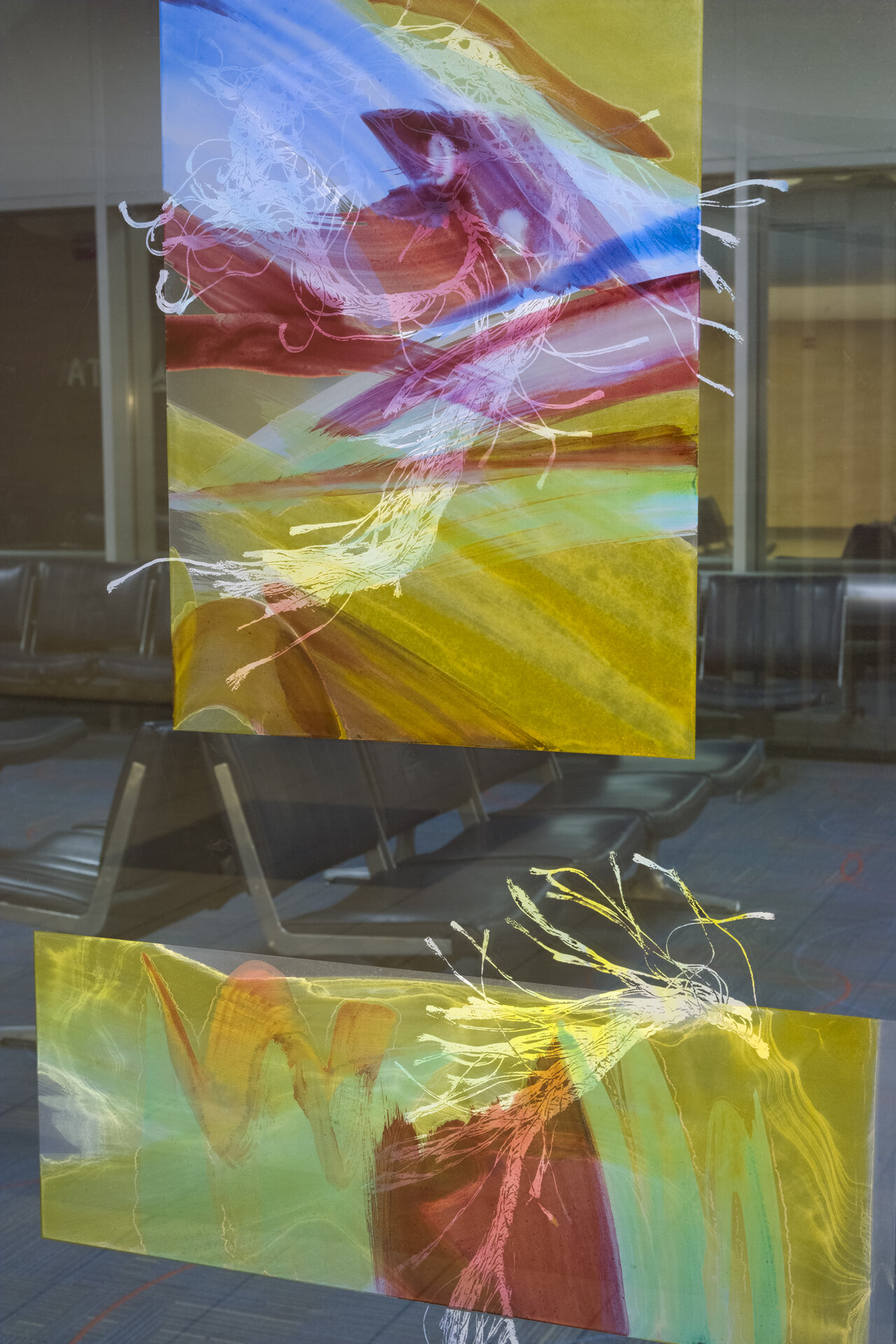
Photos by: Richard Sprengeler
A Whimsical View by Edna Patterson-Petty
Location: Near Gate A8
As a multi-media fabric artist, Patterson-Petty uses lots of colorful materials in her design concepts. For this work, she created an abstract design using watercolor paper and paint and approached it as a deconstructed art quilt design. She embellished selected areas in each panel with small bits of fabric trim as it relates to the design and color. The abstract designs float separately on the glass panels, in contrast to the way fabric pieces are sewn together to construct quilts.
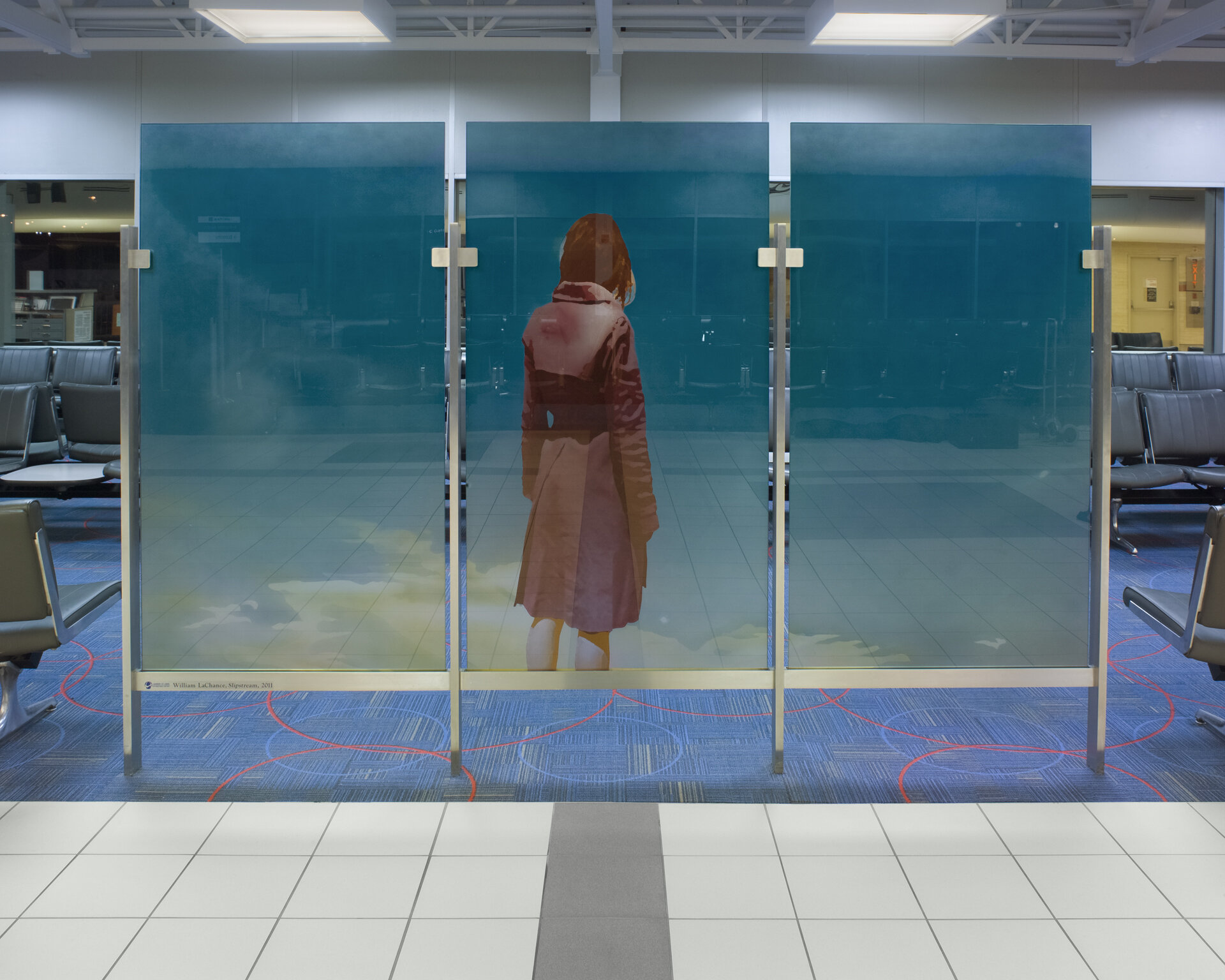
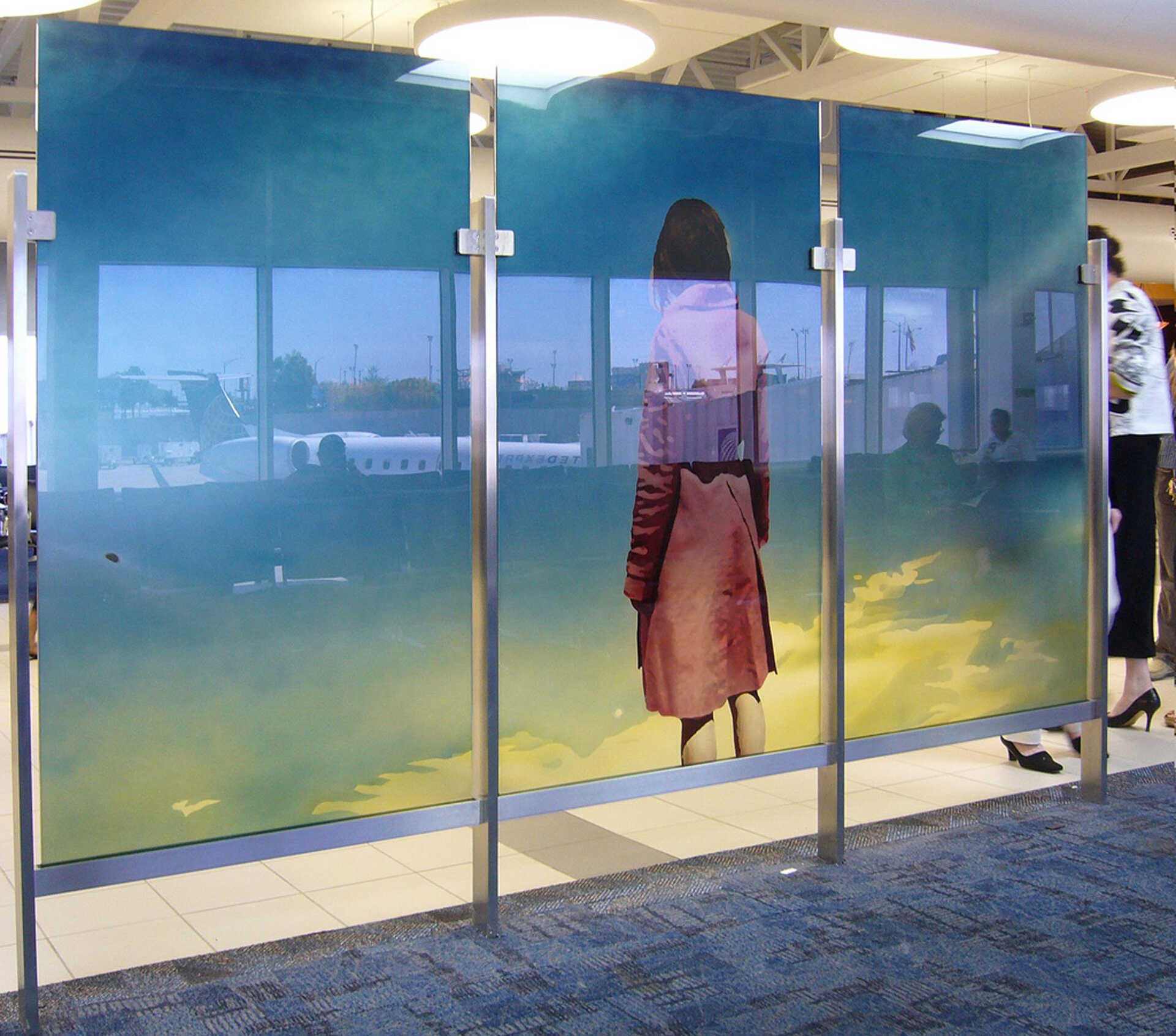
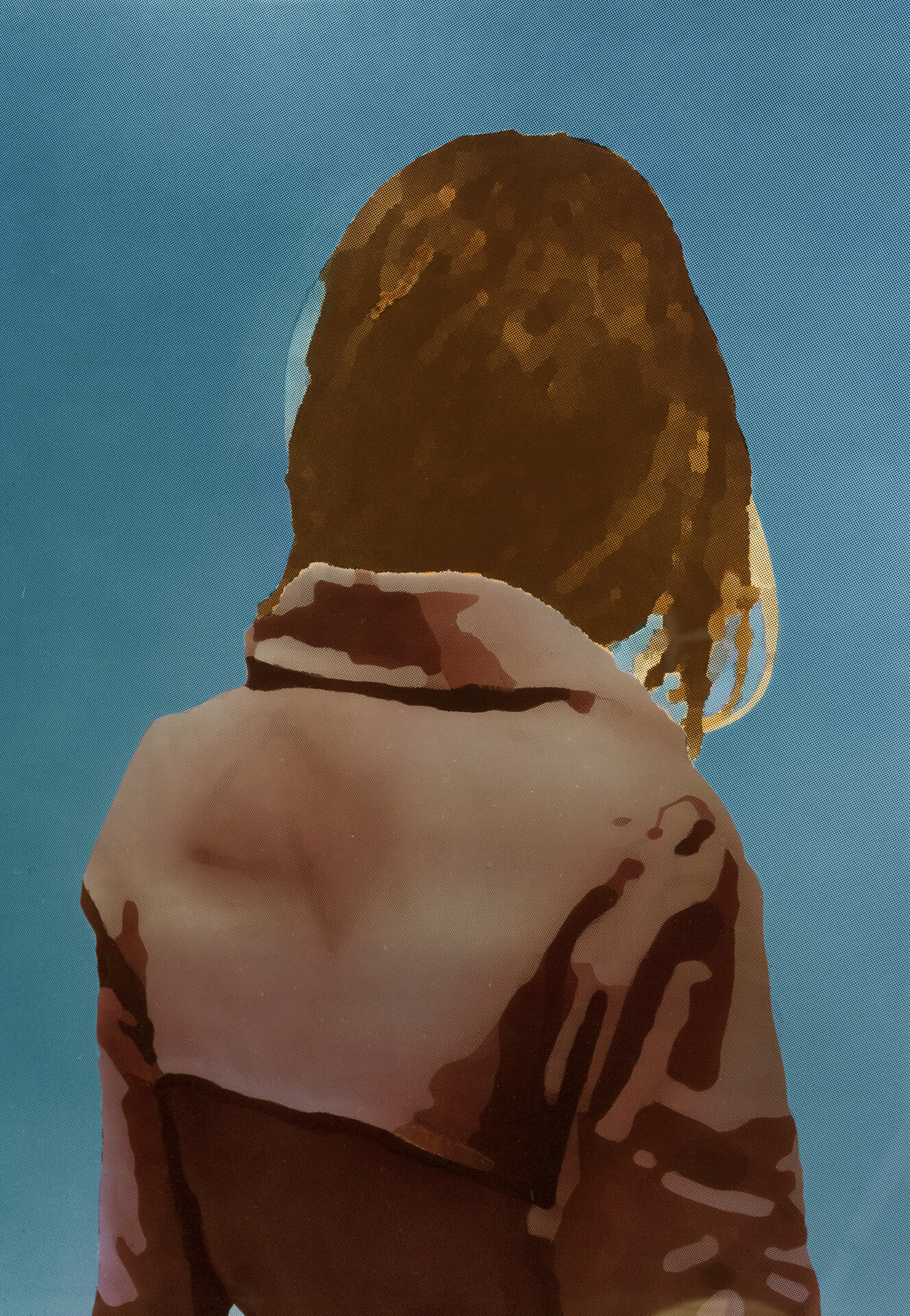
Photos by: Richard Sprengeler
Slipstream by William LaChance
Location: Near Gate A15
LaChance wanted to create an artwork for St. Louis Lambert International Airport that was site-specific without being overtly so, and he also wanted to create an image with a complicated narrative that would engage the viewer. To achieve this narrative quality while staying within the parameters of the glass technique, he pared down the composition to a single figure and created an image that recalls film stills or cinema, exploiting the inherent filmic characteristics of the piece’s format – its movie screen-like aspect ratio, the transparency of the glass, and the triptych’s intermittent divisions. The deadpan composition and the keyed-up color hues, as well as the gesture of the figure facing away from the viewer, are all meant to reinforce this movie-like quality and evoke in the viewer a kind of empathetic narrative. The abundance of sky, the absence of a horizon line, and the garment worn by the figure are all subtle references to flight and travel.
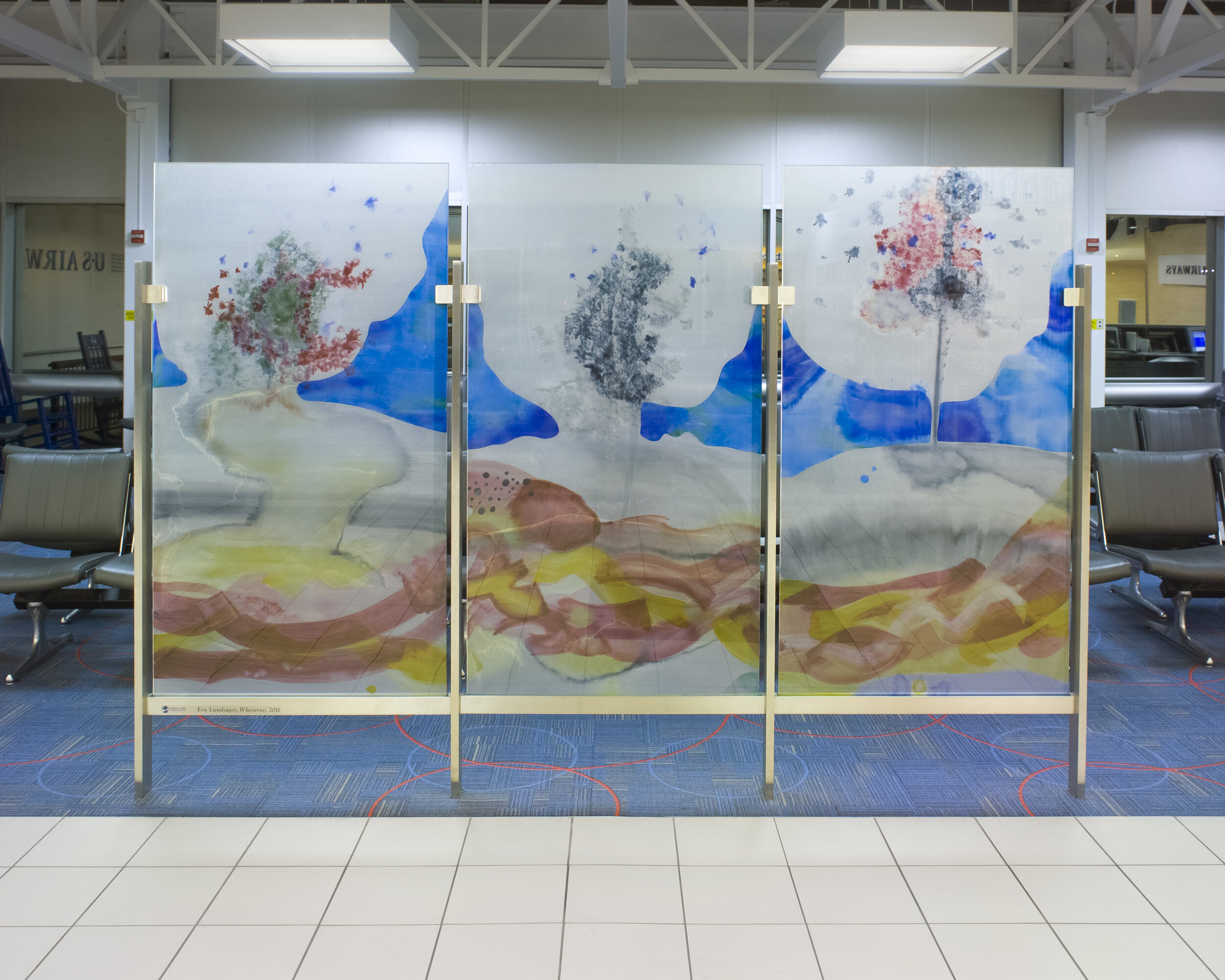
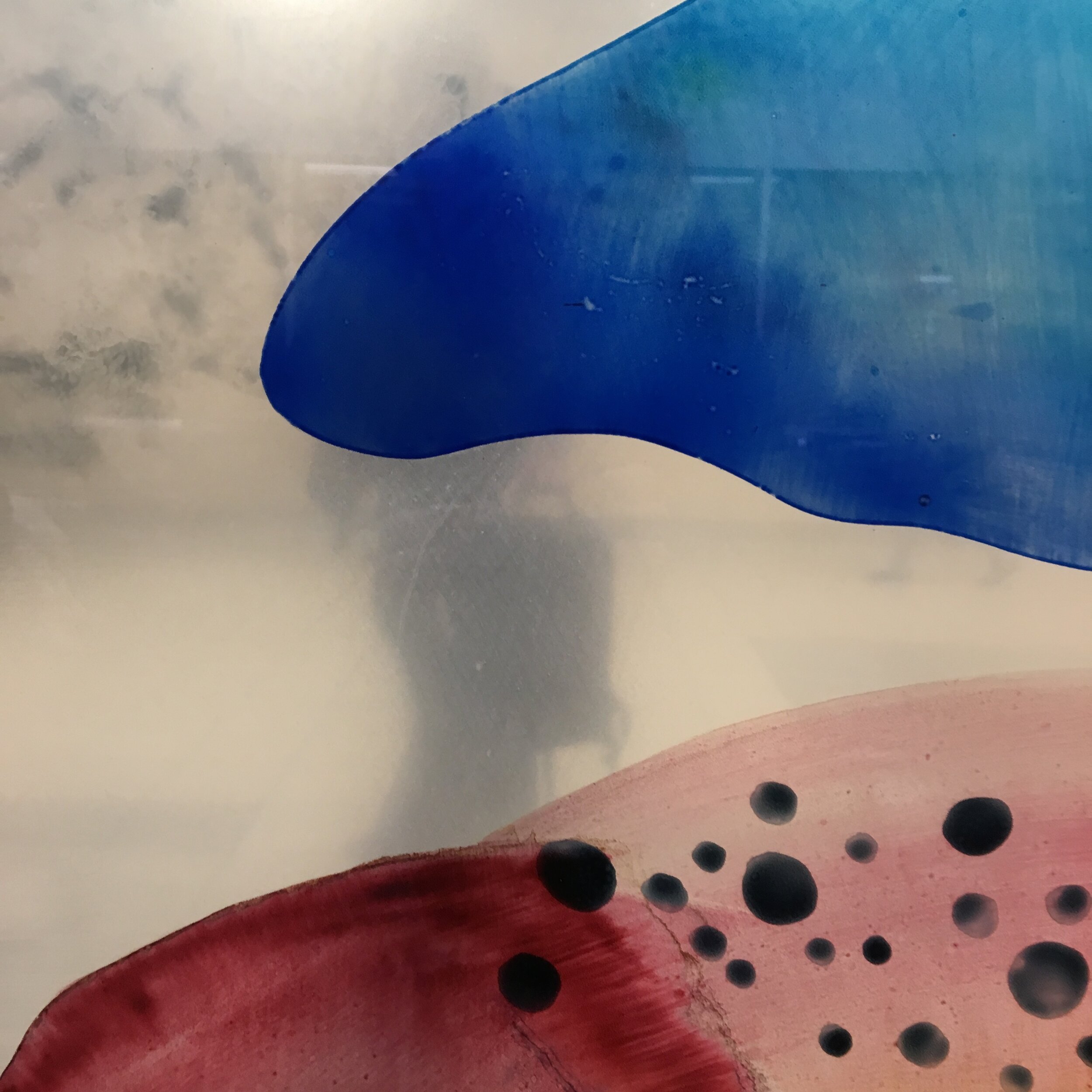

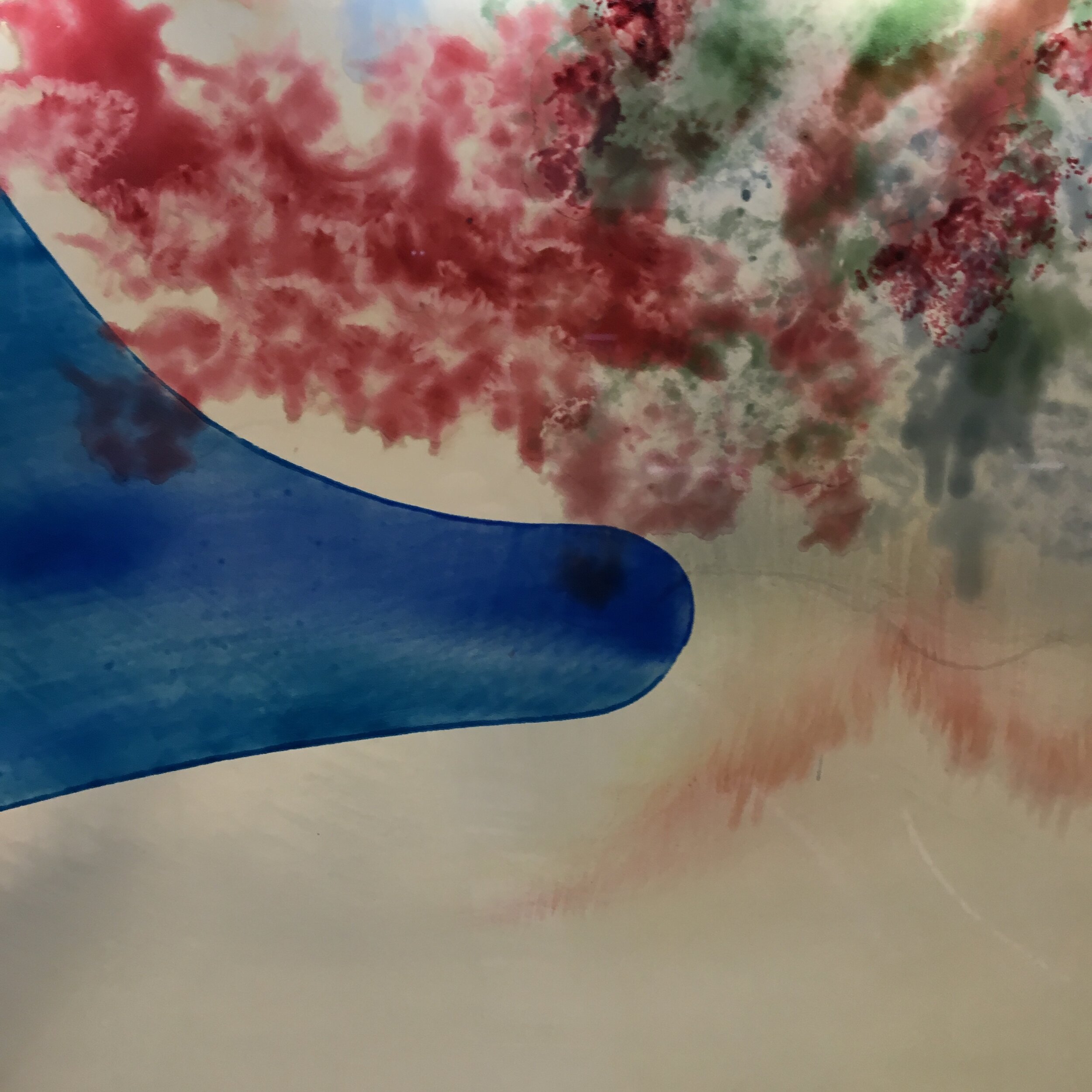
Photos by: Richard Sprengeler
Wherever by Eva Lundsager
Location: Near Gate A17
Wherever acknowledges the centuries old experience of stained glass windows and acts as a catalyst for dreamy, in-the-moment focus, presenting a place that is weightless and blissful -- another world. The liquid brush strokes of watercolor and the overlapping translucent colors translate beautifully into glass. Lundsager’s aim is for a vivid, unreal world that never completely coalesces into recognizable imagery but allows the viewer to find a momentary escape into their own Wherever.
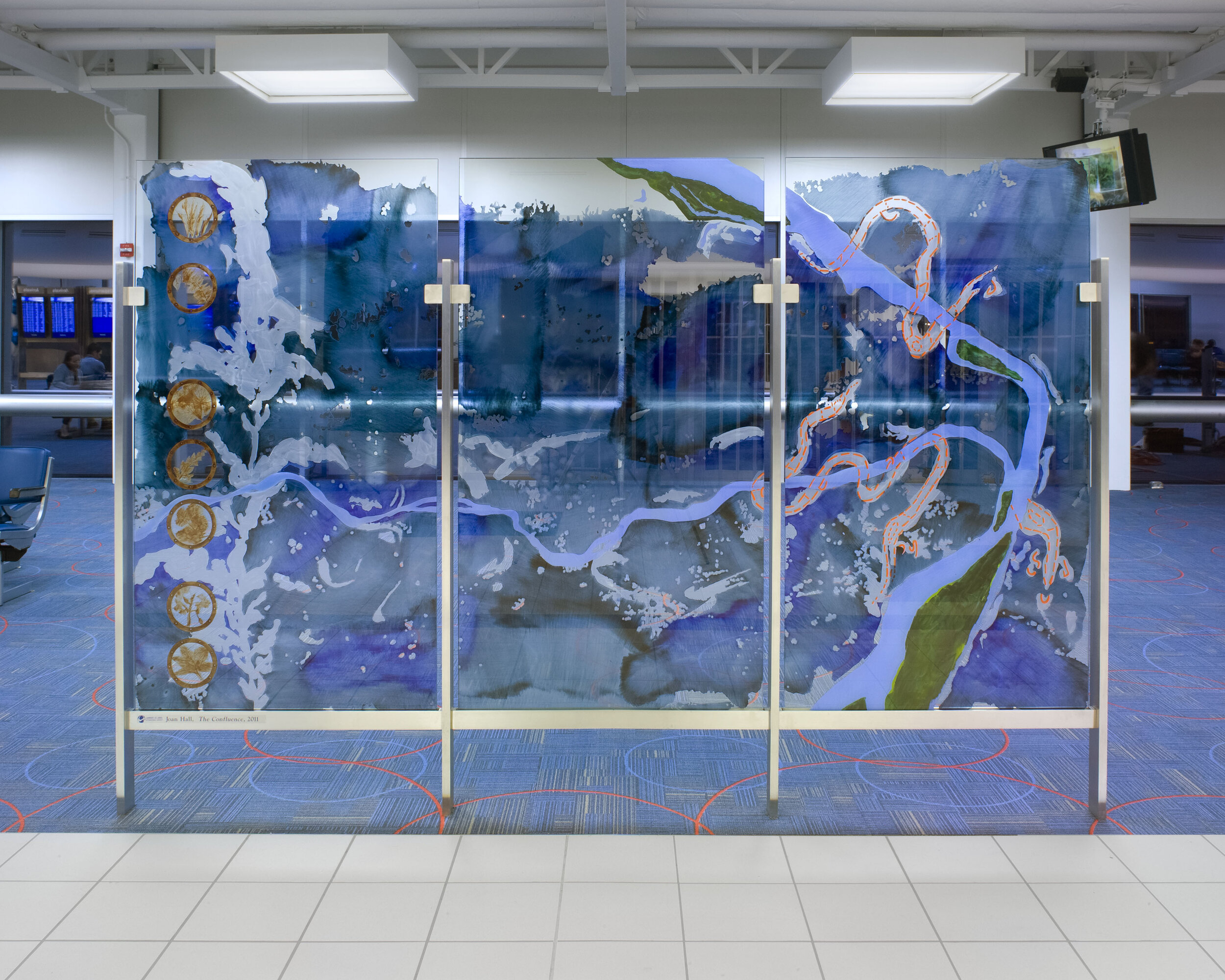
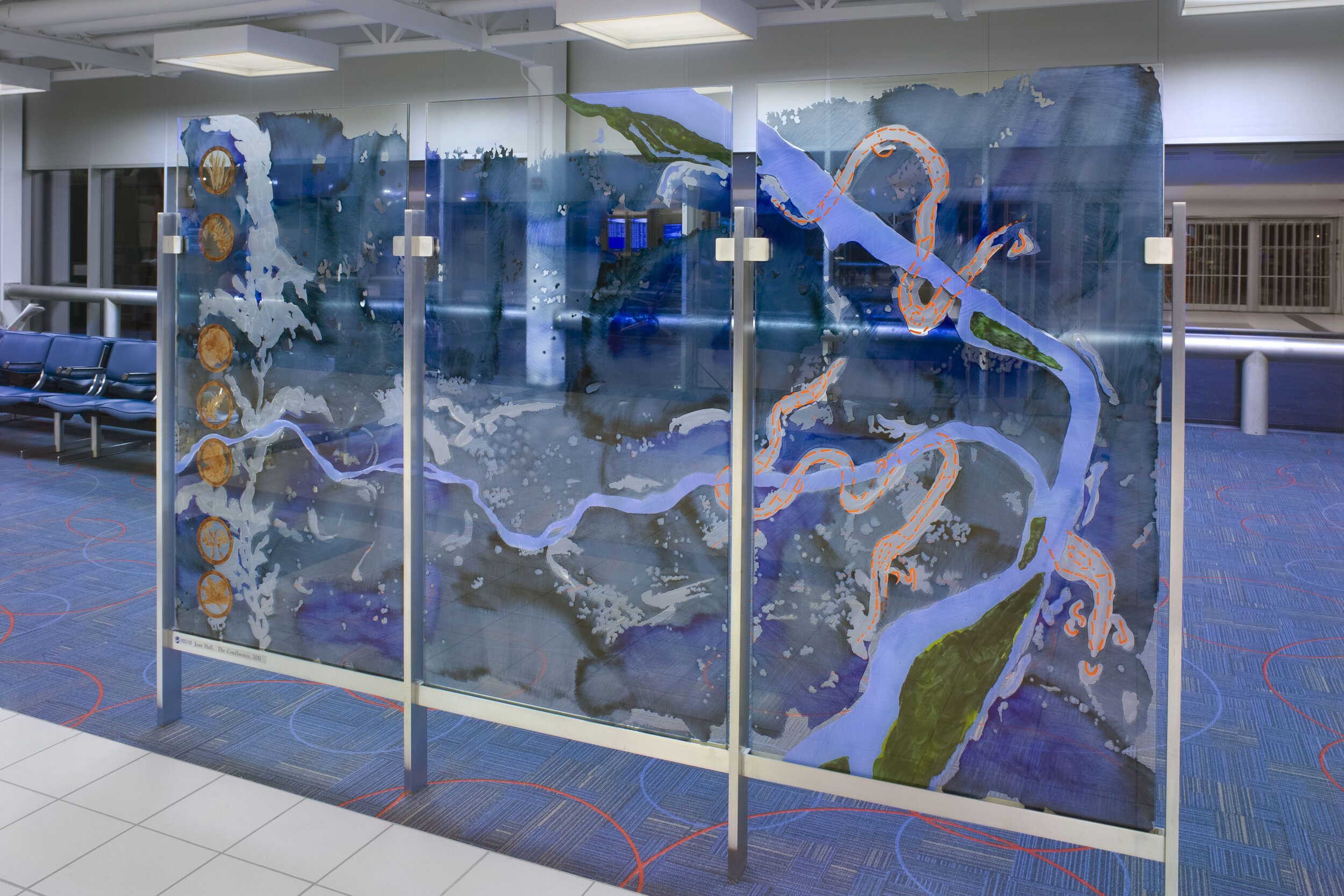
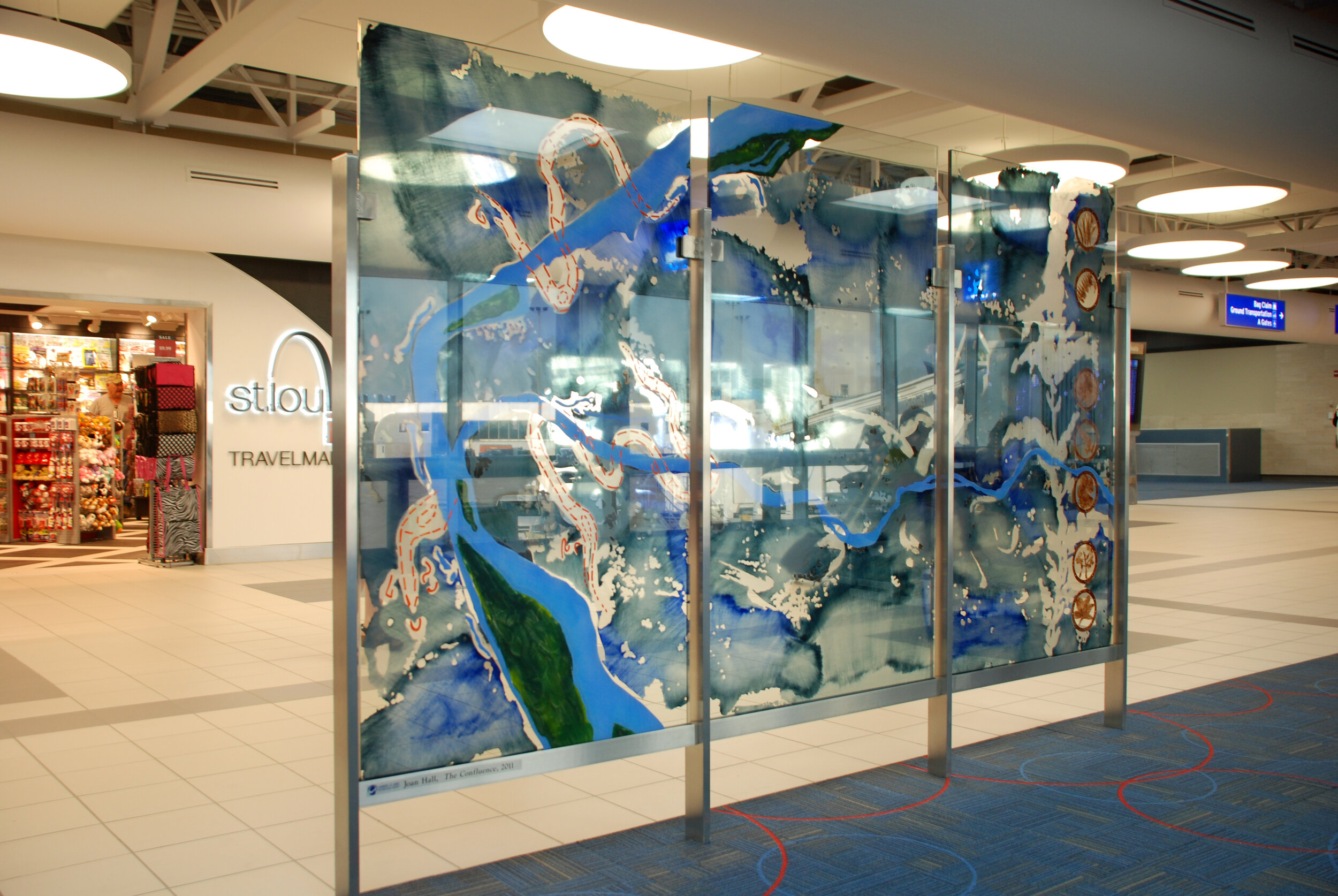


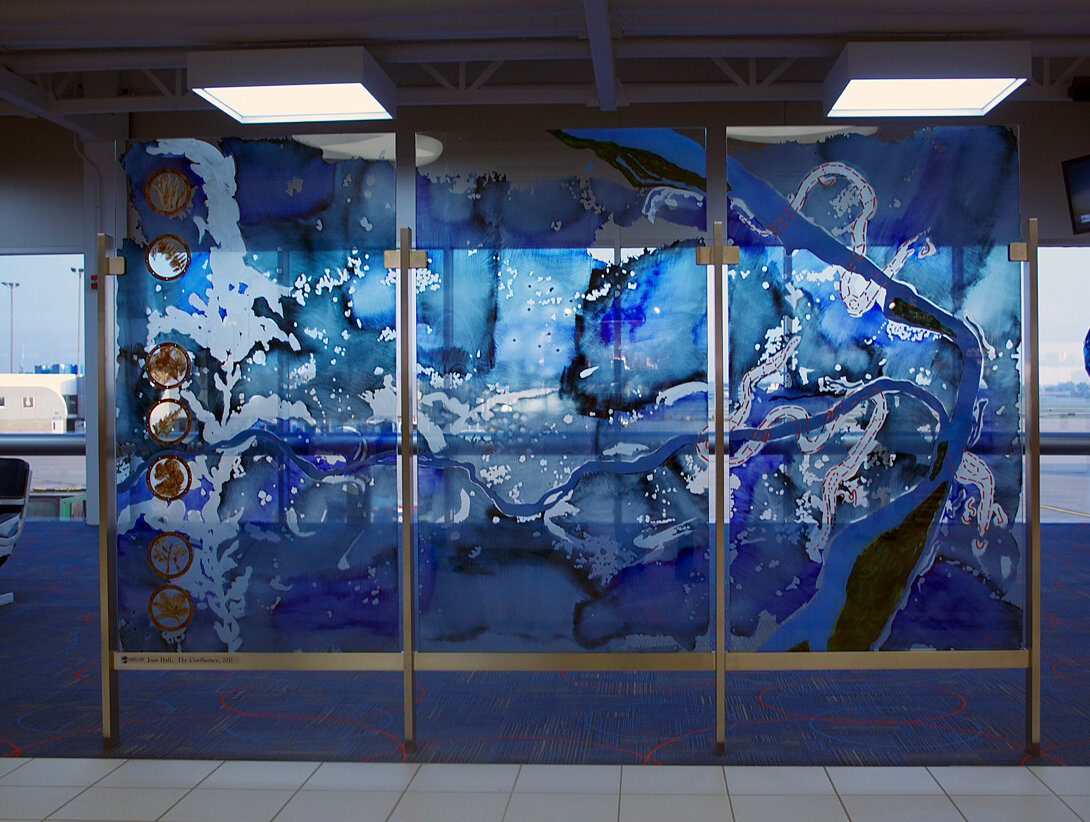
Photos by: Richard Sprengeler
The Confluence by Joan Hall
Location: Near Gate C5
Hall’s interest in systems and relationships led her to design an artwork for the airport that is influenced by the confluence of the Mississippi and Missouri Rivers, two of the greatest rivers in North America. Her research took Hall to the Confluence multiple times to observe the spot where the two rivers combine into one. She made rubbings of native plants while walking the banks of the river.
She also discovered that Lewis and Clark collected more than 220 plant samples on their journey up the Missouri River and these samples far outnumber other objects in their collection, as plants where extremely valuable to nineteenth-century Euro-American researchers. Hall discovered these explorers used plants, such as the Compass Golden Rod – which always points to the North, to navigate on the plains. In her work, she depicted the Compass Golden Rod as a ghost-like shape. Rubbings of other native plants are placed within portals and navigational charts, which refer to the importance of commerce on the rivers. The turbulent rivers themselves are represented through the two colors of swirling blue that dominate and flow through the design.
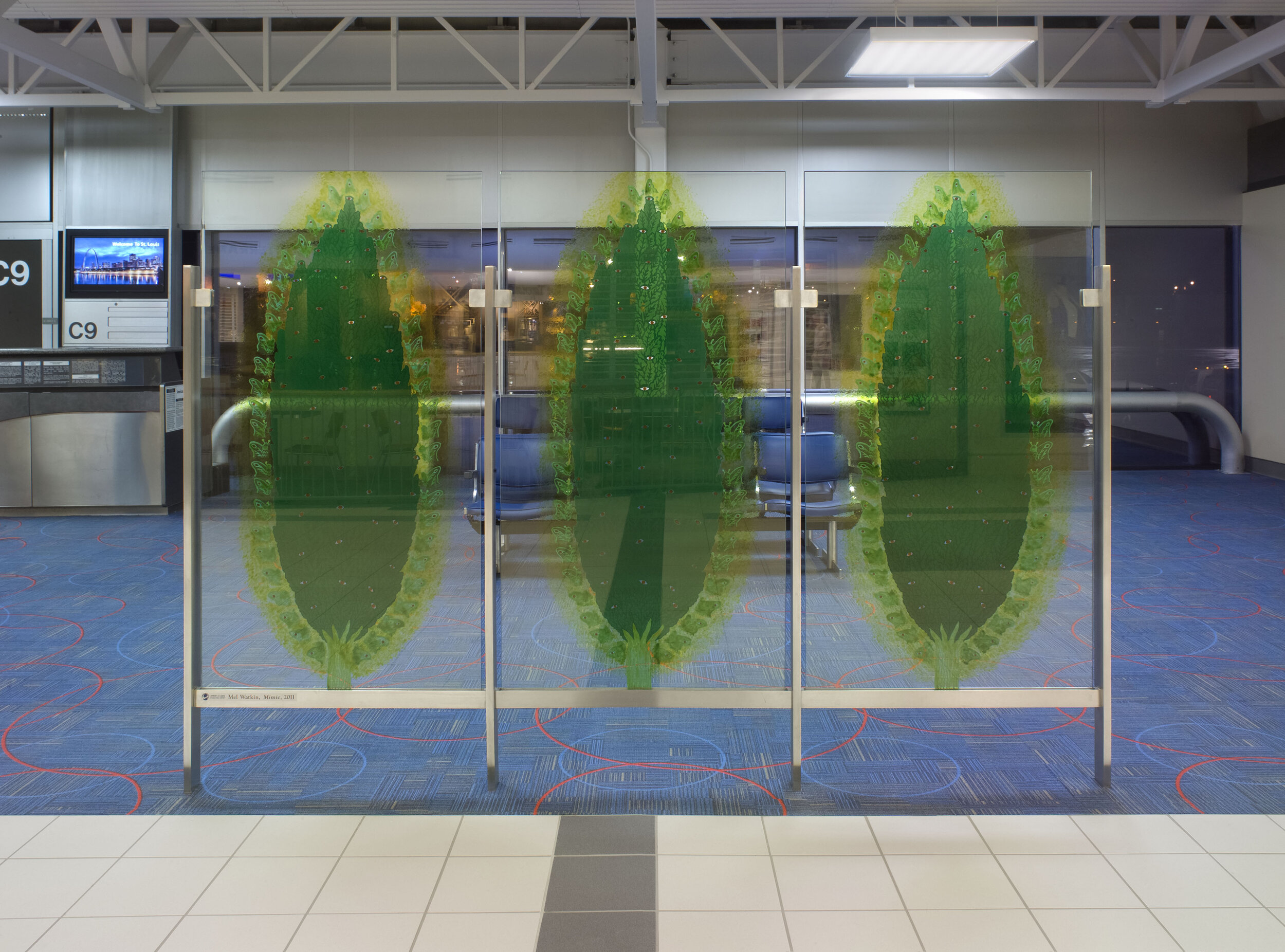
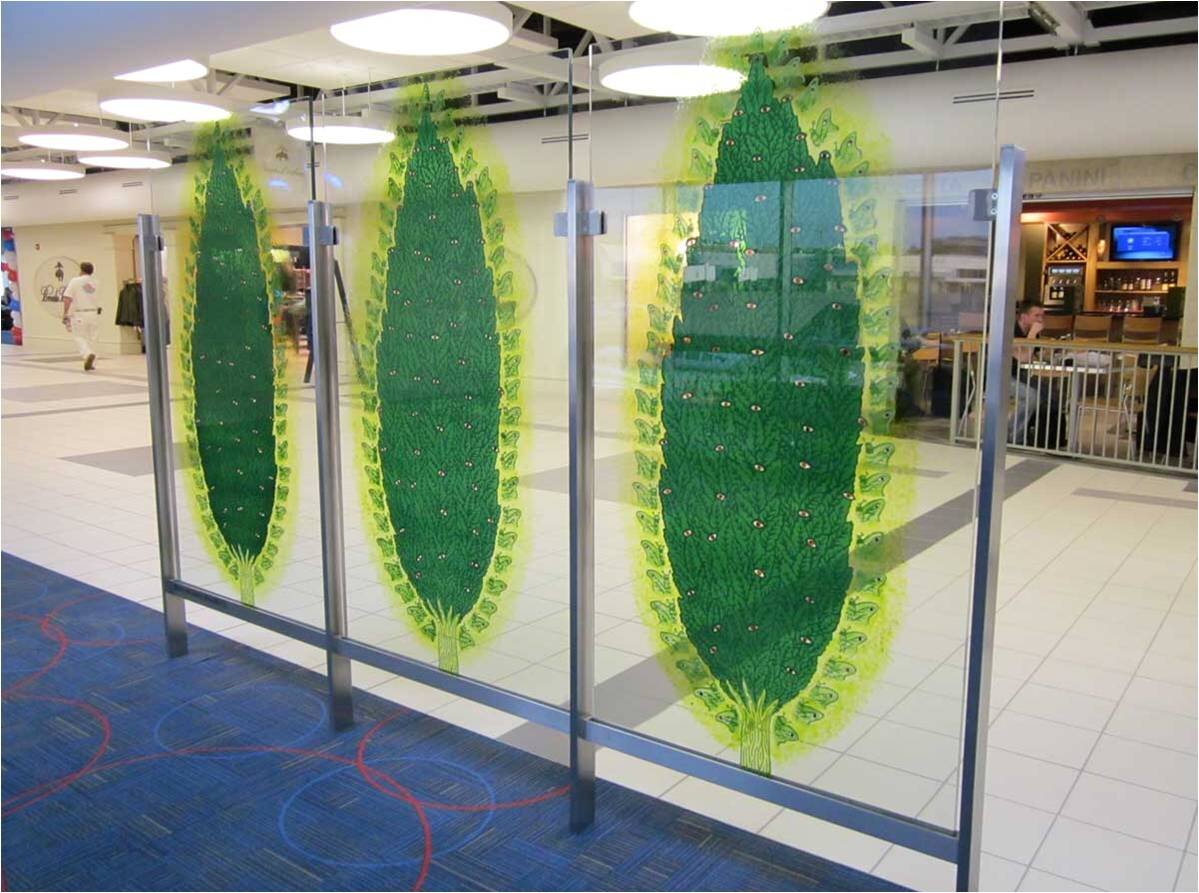
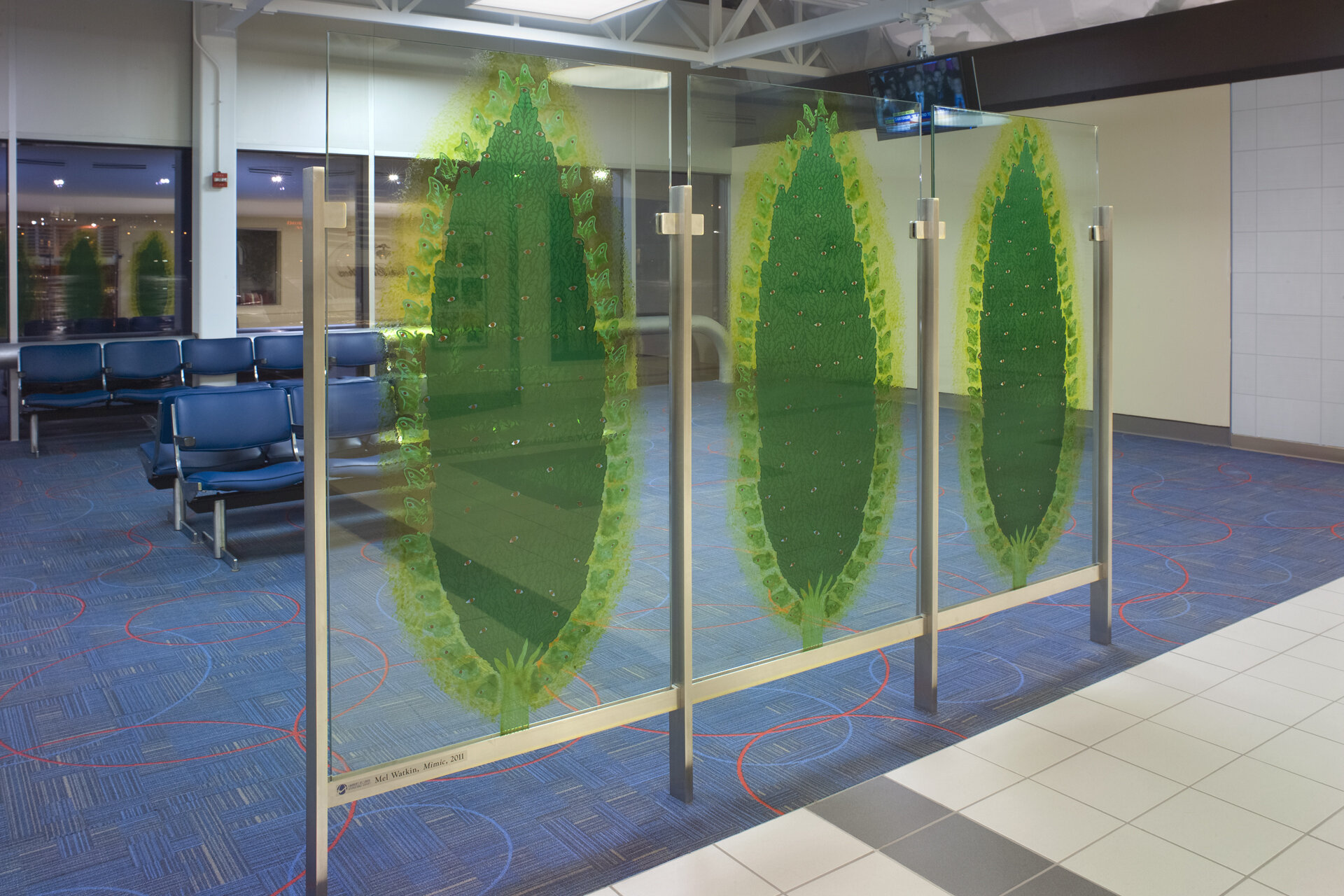
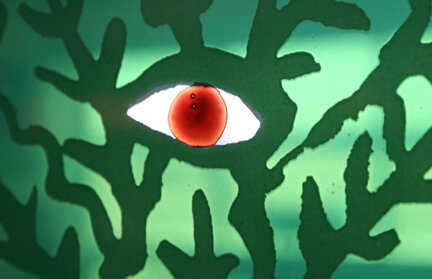
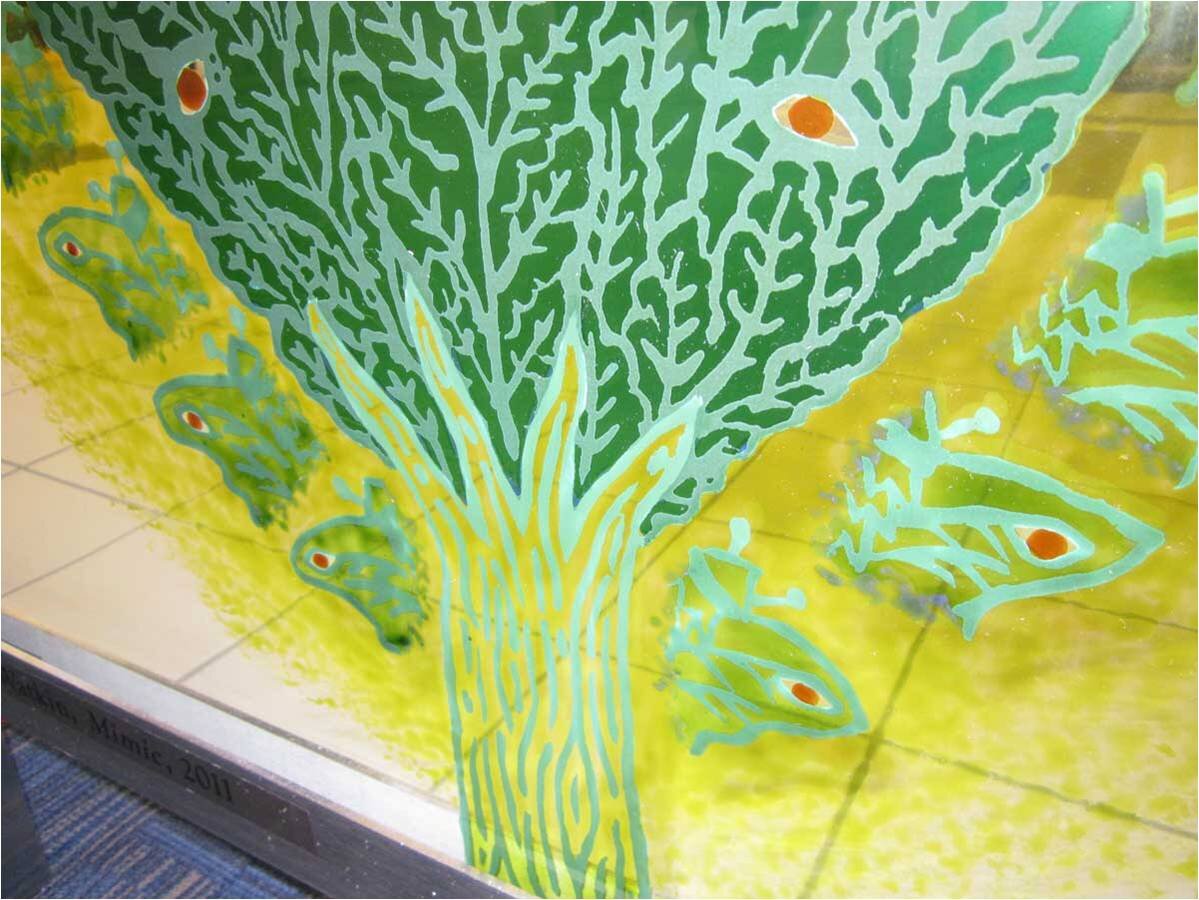
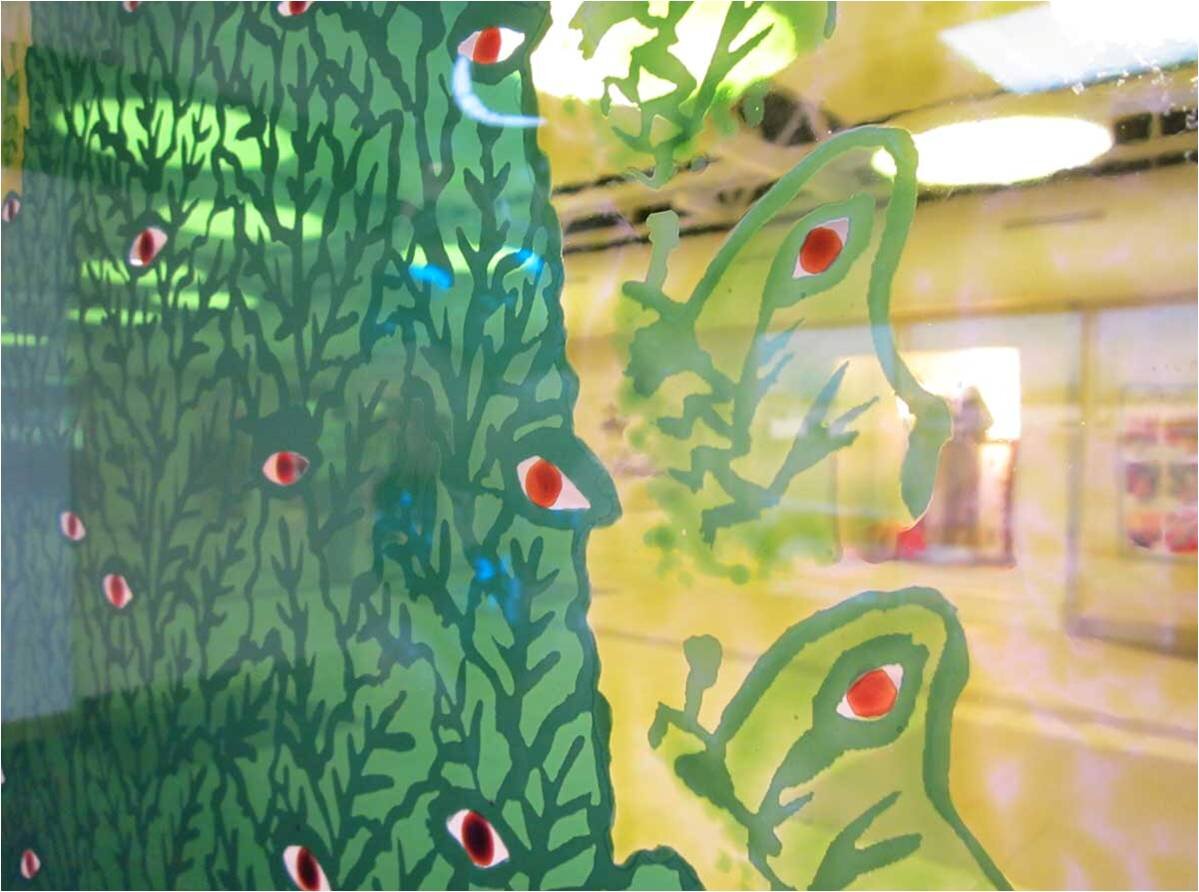
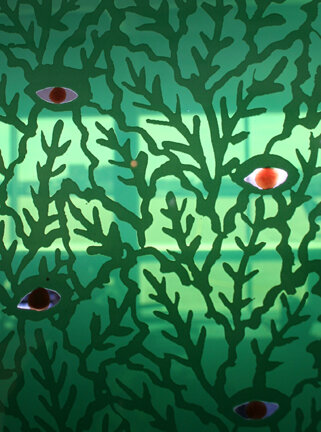
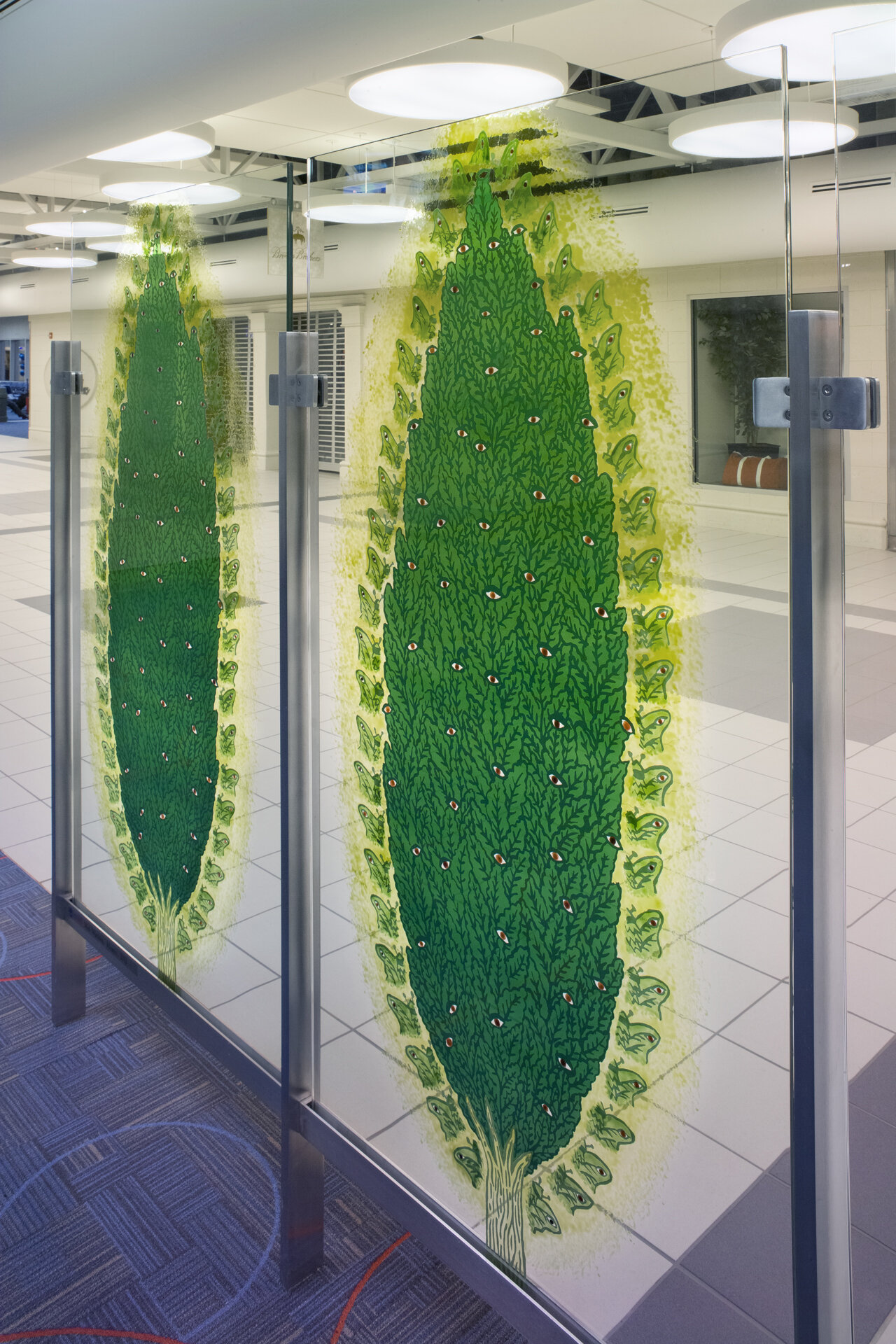
Photos by: Richard Sprengeler
Mimic by Mel Watkin
Location: Near Gate C9
This piece consists of three near exact copies of an Italian Cyprus tree, each surrounded by a halo of Luna moths. Each tree is free standing on a clear sheet of glass—as if they had grown out of the floor. Watkin’s hope is the piece will feel like a hedge to those sitting or standing nearby.
The scale of this work mimics the scale of the Italian Cyprus tree, which only grows 6-8 feet in height. While they do not glow, Luna moths are an almost fluorescent green and are often as large as the palm of your hand. She gave them the attributes of insects that mimic the shape and color of the flora around them to elude predators. In this work the Luna moths are trying to hide by mimicking the shape of the Cyprus trees. In turn the berries on the Cyprus trees mimic the wing markings of the Luna moths, which look like eyes.
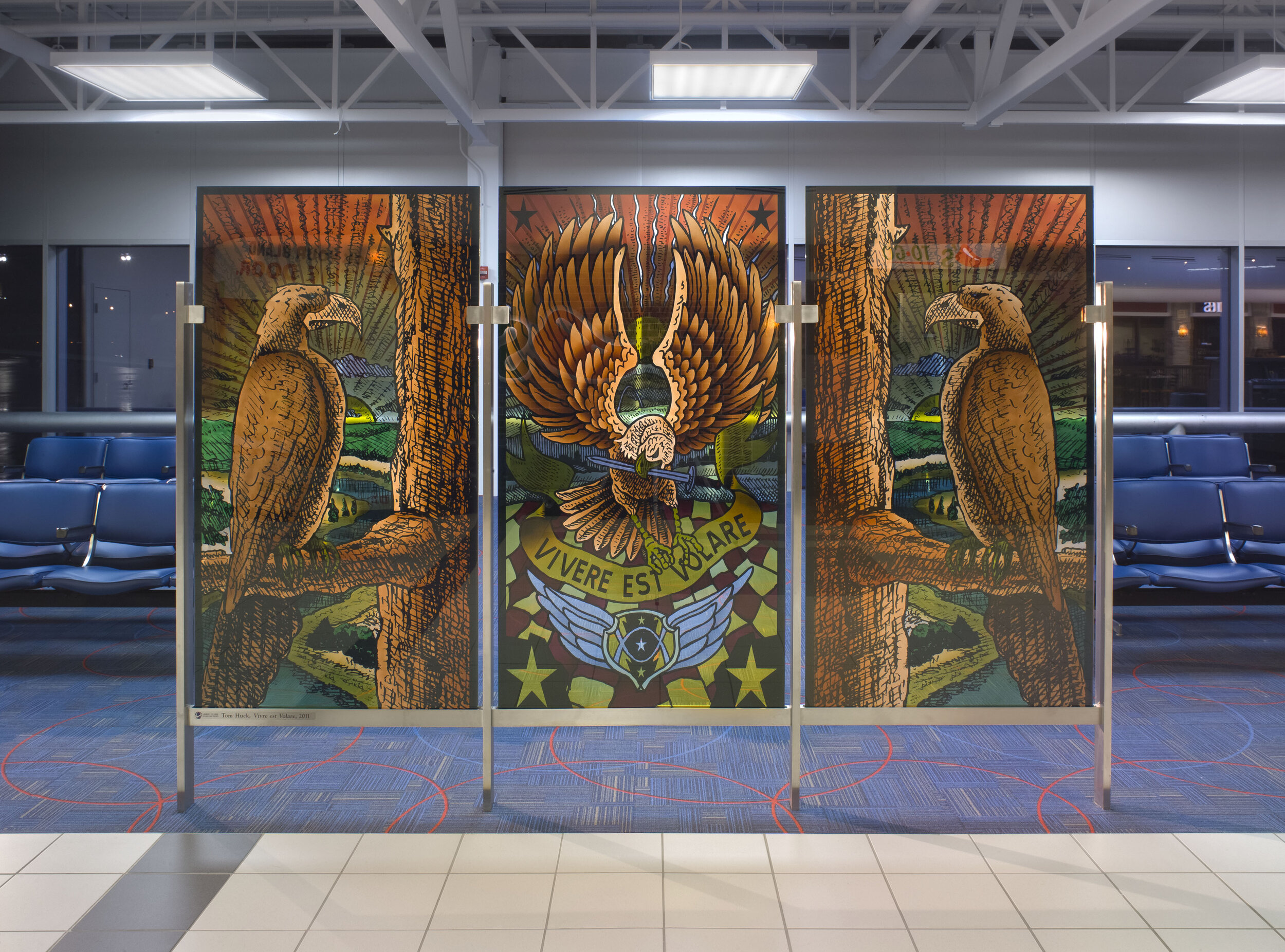
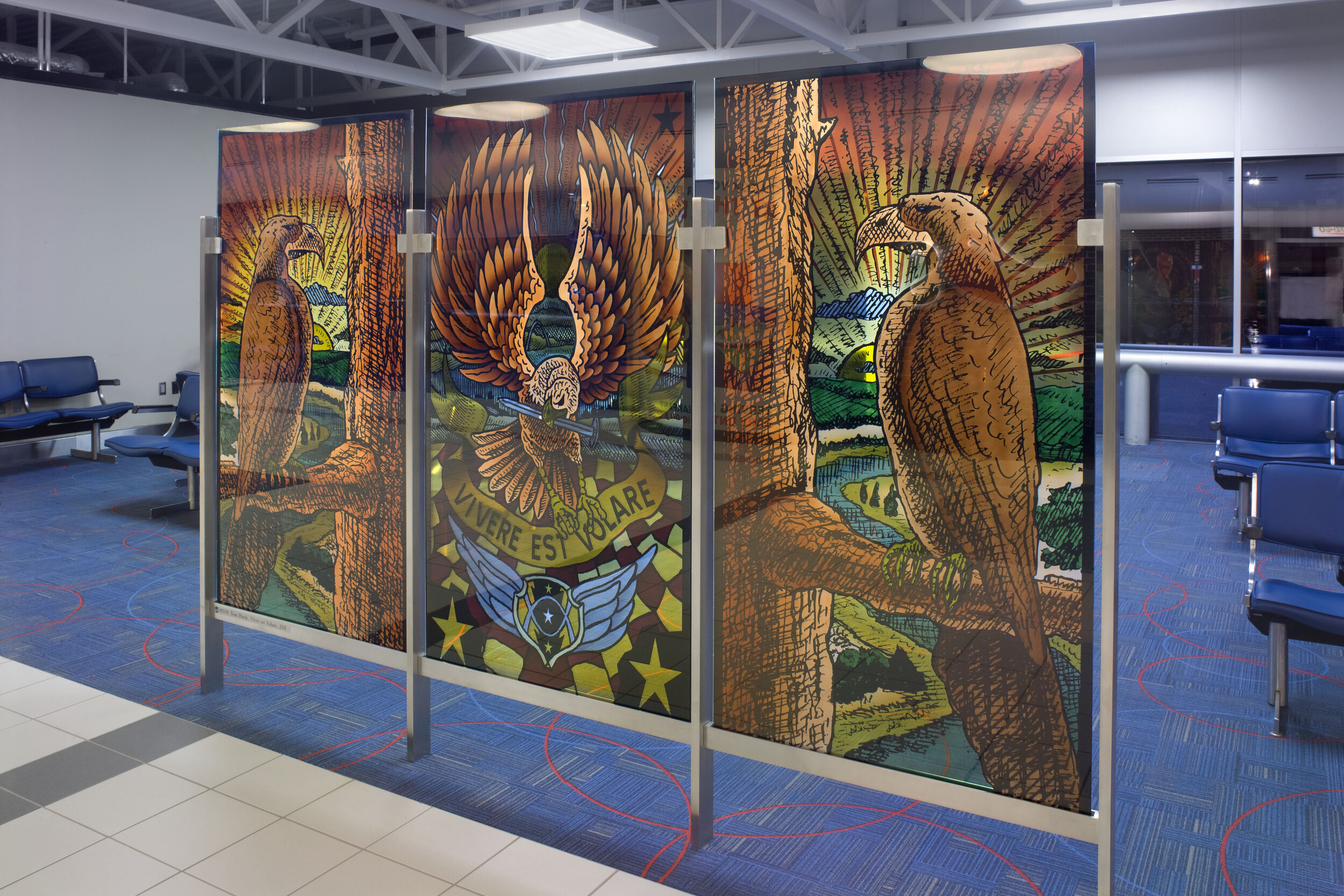
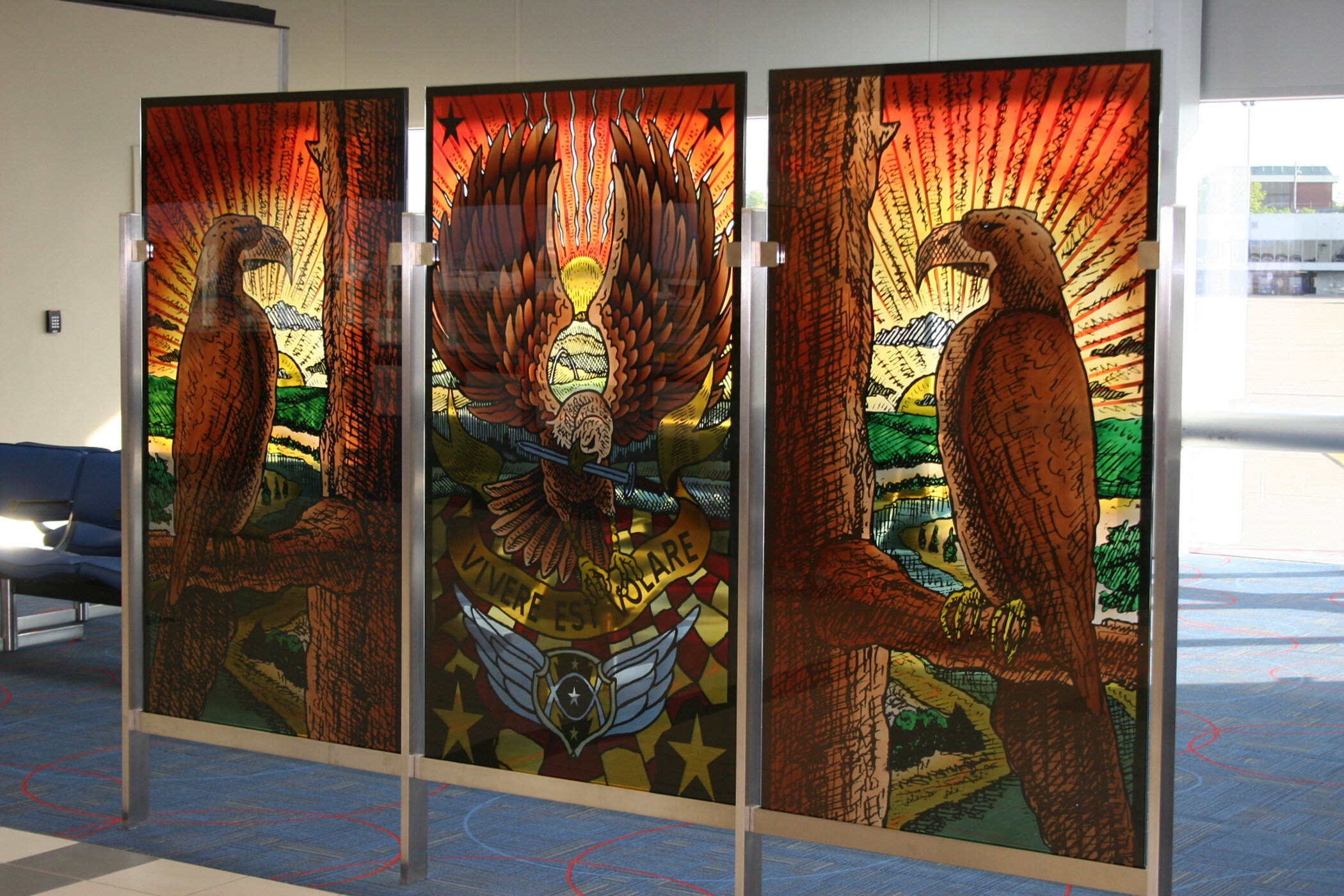
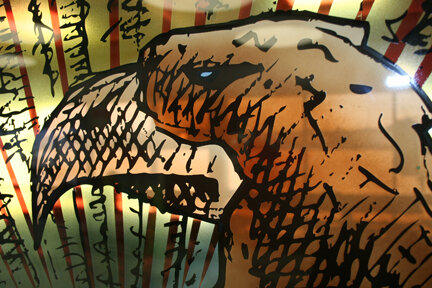
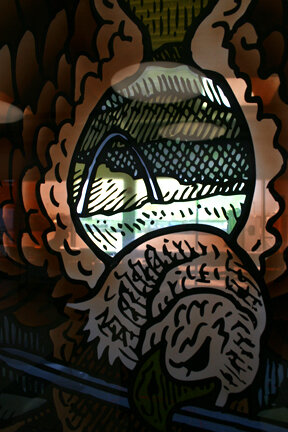
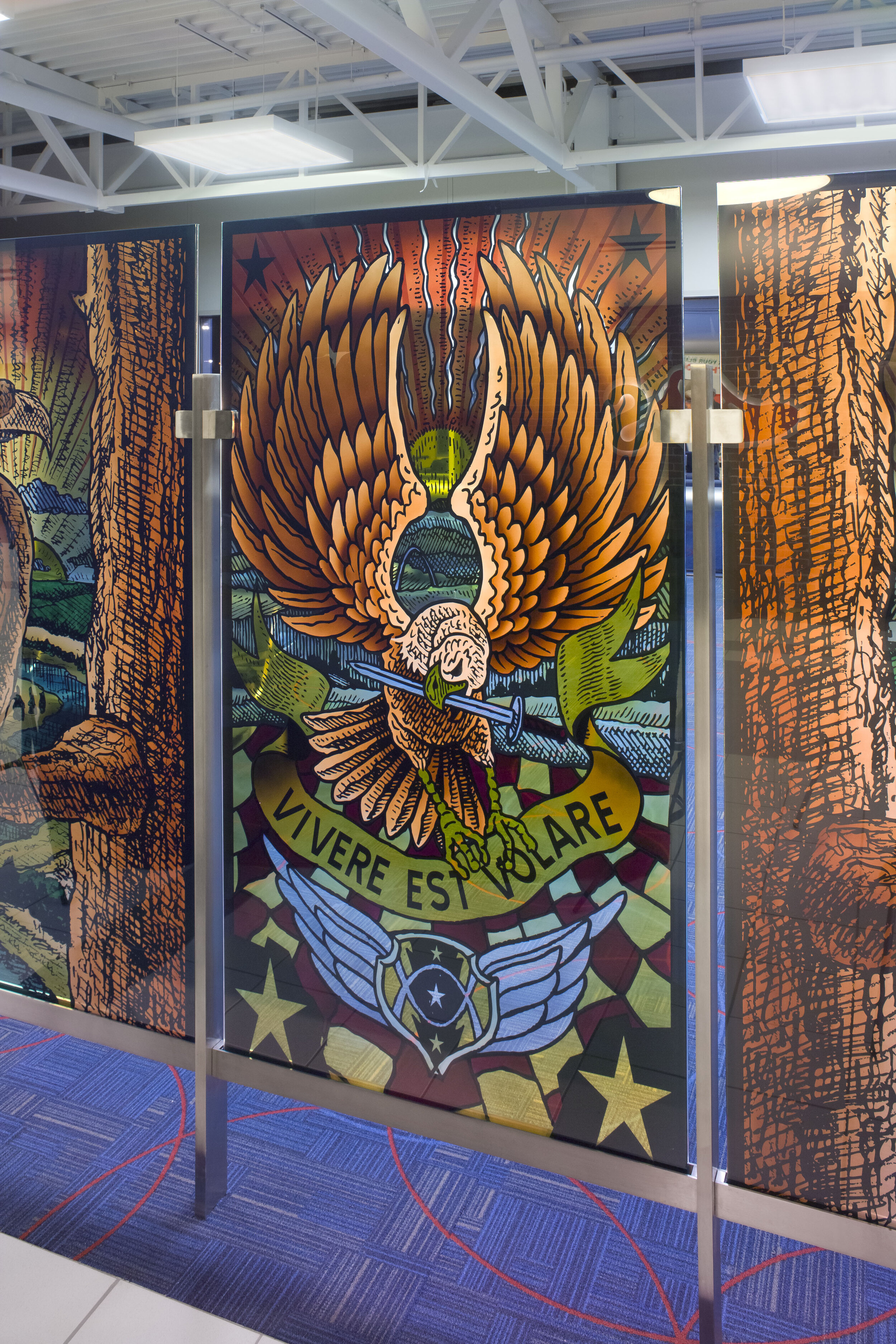
Photos by: Richard Sprengeler
Vivere est Volare by Tom Huck
Location: Near Gate C15
For this piece, Huck took the concept of old fashioned tattoo flash and combined it with images of birds of prey. He chose birds of prey because of their heavy use in traditional tattoo flash and because they are in keeping with the theme of flight relating to the nature of this project.
In the center panel, a bald eagle holds a banner reading: “VIVERE EST VOLARE” – to live is to fly. The two side panels depict birds of prey at dawn and dusk. As a whole, the design of the panels represents a fusion of Huck’s interests in stained glass windows, traditional tattoo flash and Northern Renaissance woodcuts of the 1400s.
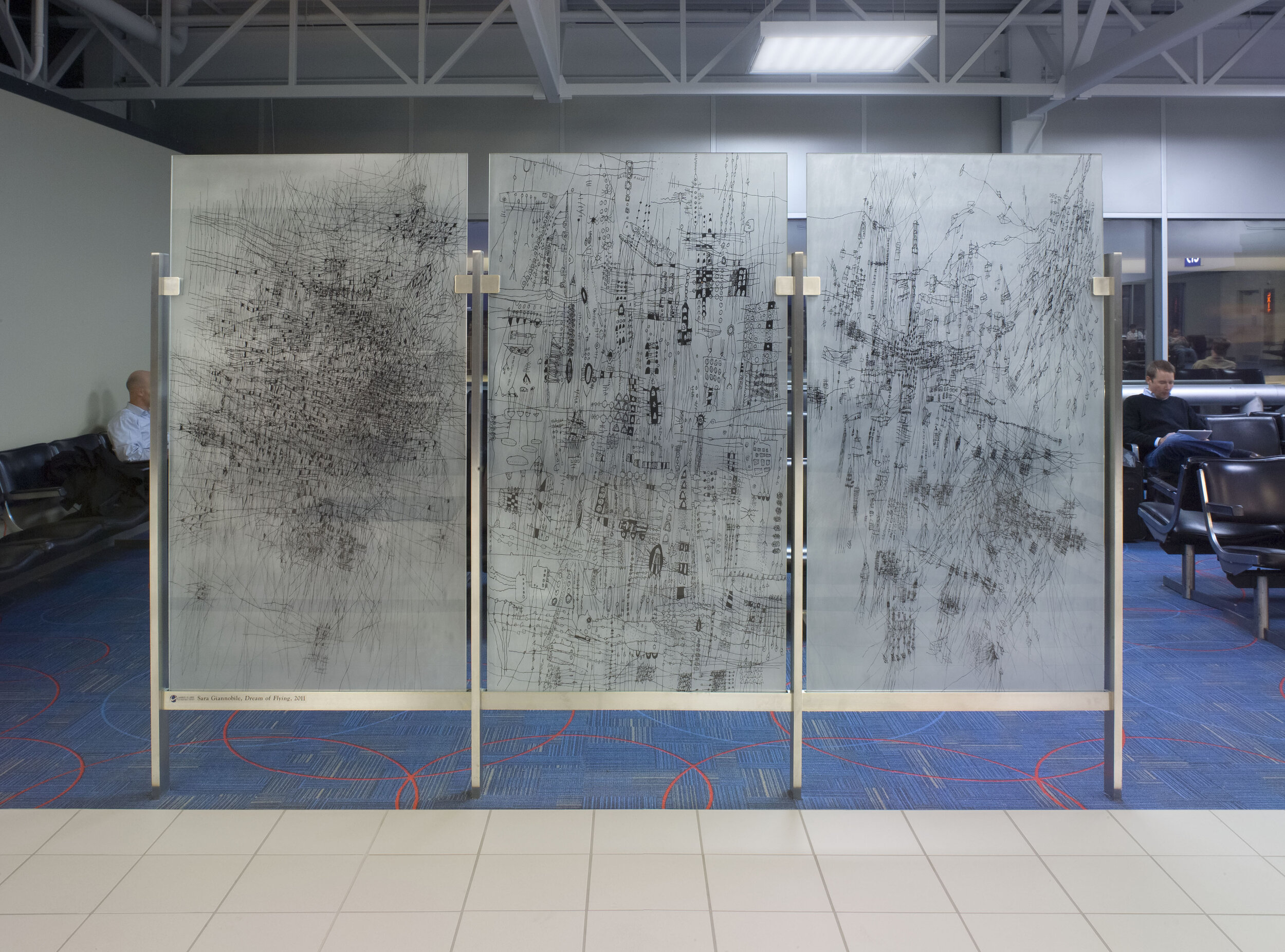
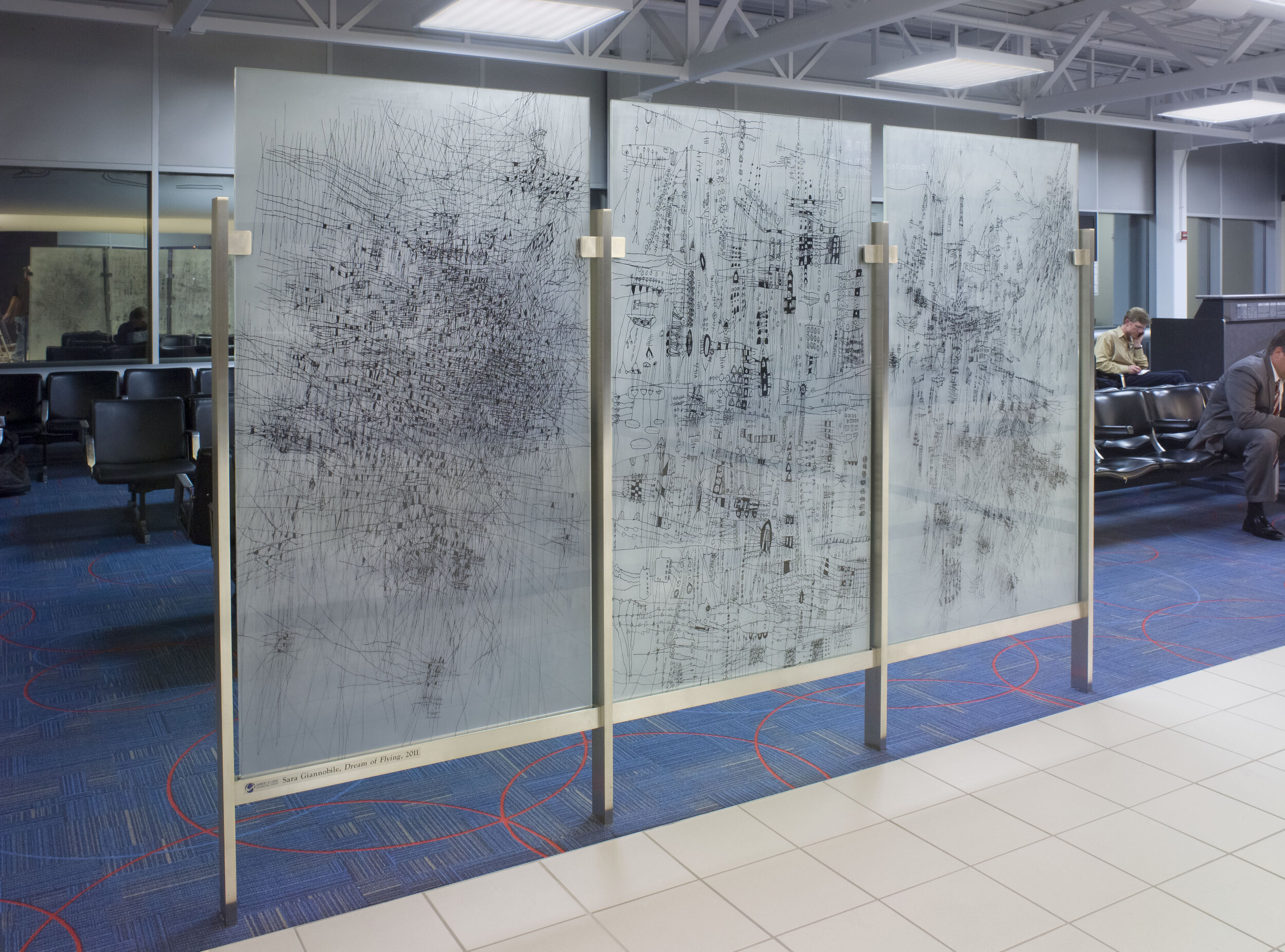
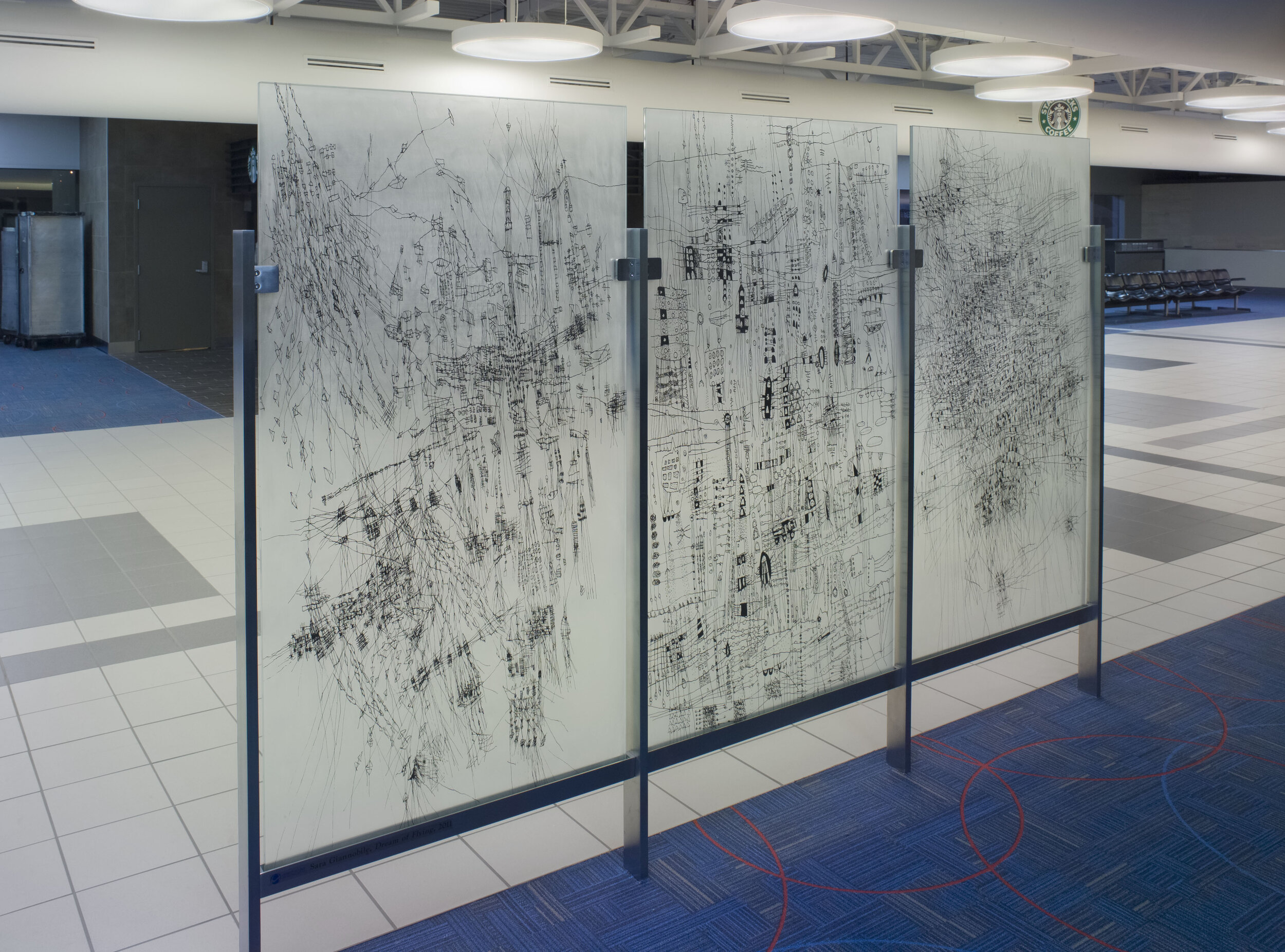
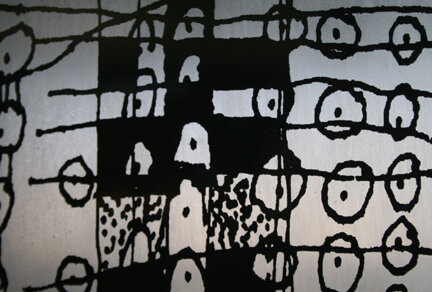
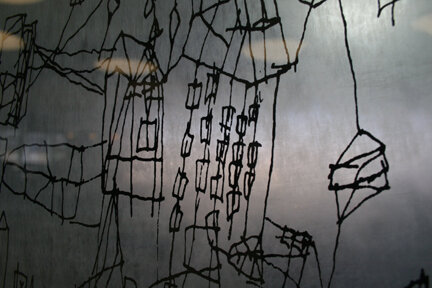

Dream of Flying by Sarah Giannobile
Location: Near Gate C18
This piece is composed of three separate drawings that can be viewed as invented landscapes and imaginary web forms found in nature. The drawings are like exaggerated and abstract environments. In Giannobile’s work, repeated shapes and symbols can sometimes appear like an aerial view or a map. For this piece, she wanted to make her drawings appear to be growing and multiplying and weaving in the surrounding spaces.
Photos by: Richard Sprengeler
Giannobile hopes the viewer can envision busy streets and small hidden dwellings in these different abstract forms. Color will be created by passersbys, whose movements diffuse when they are seen through the translucent white.
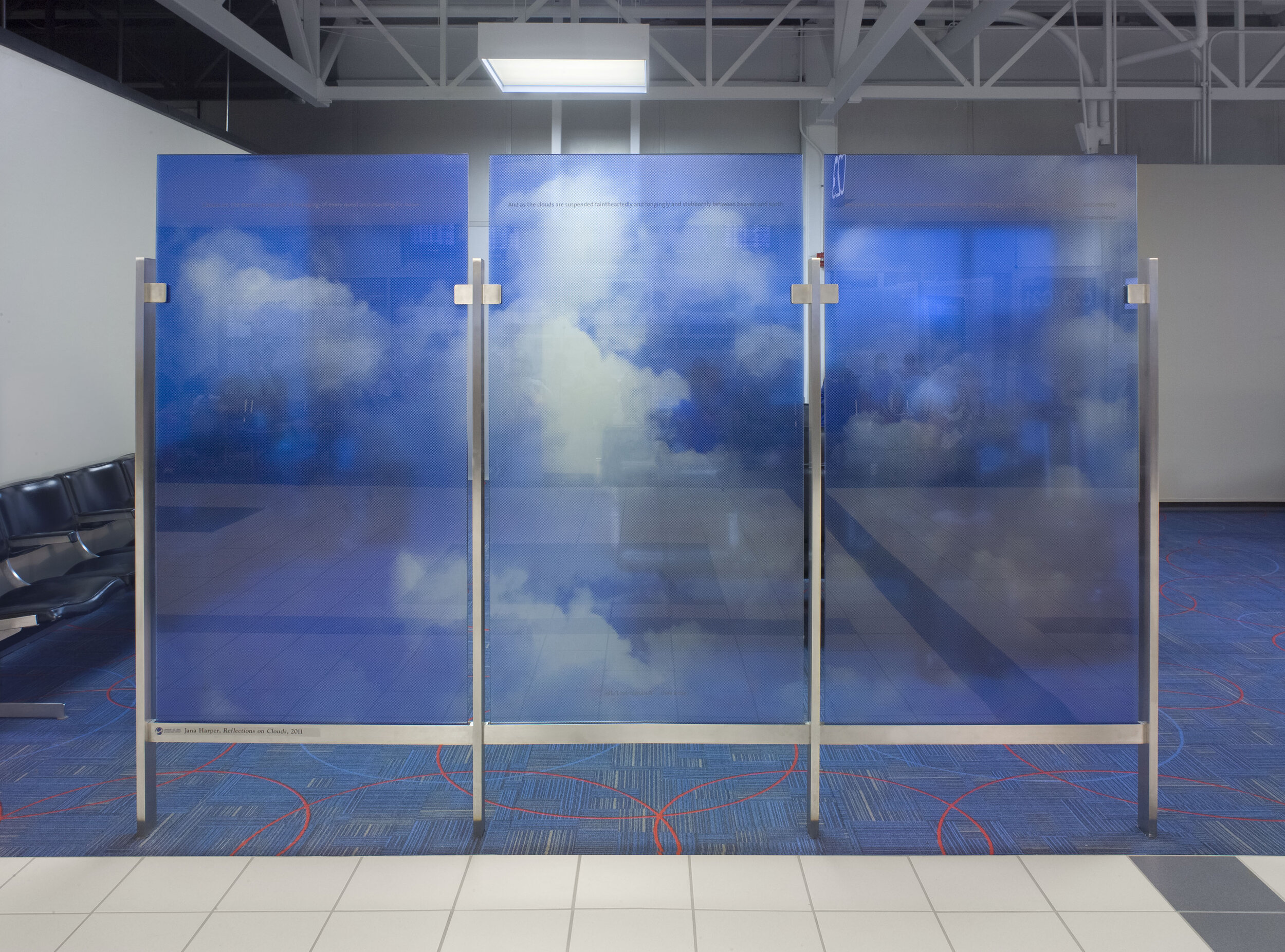
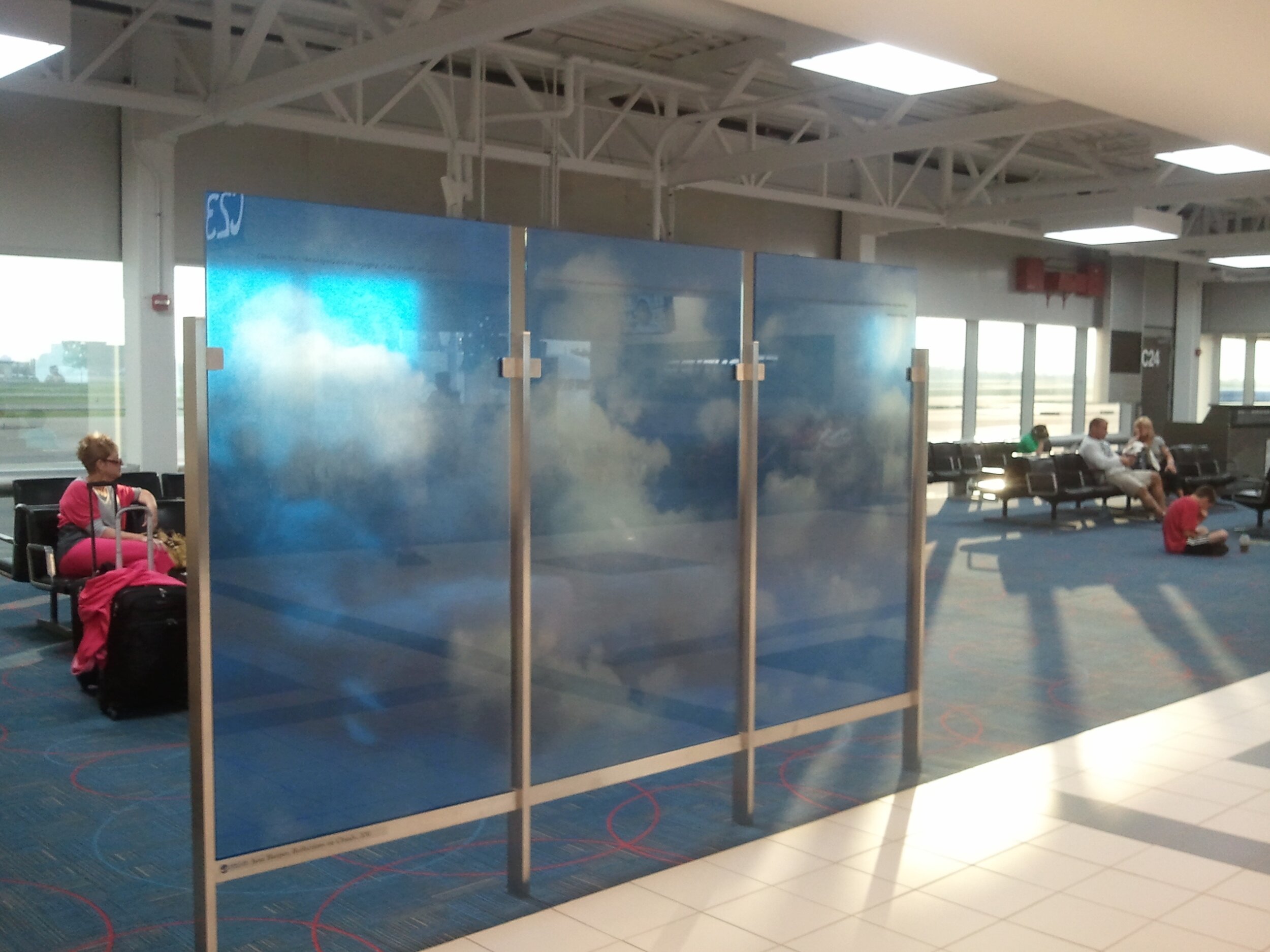

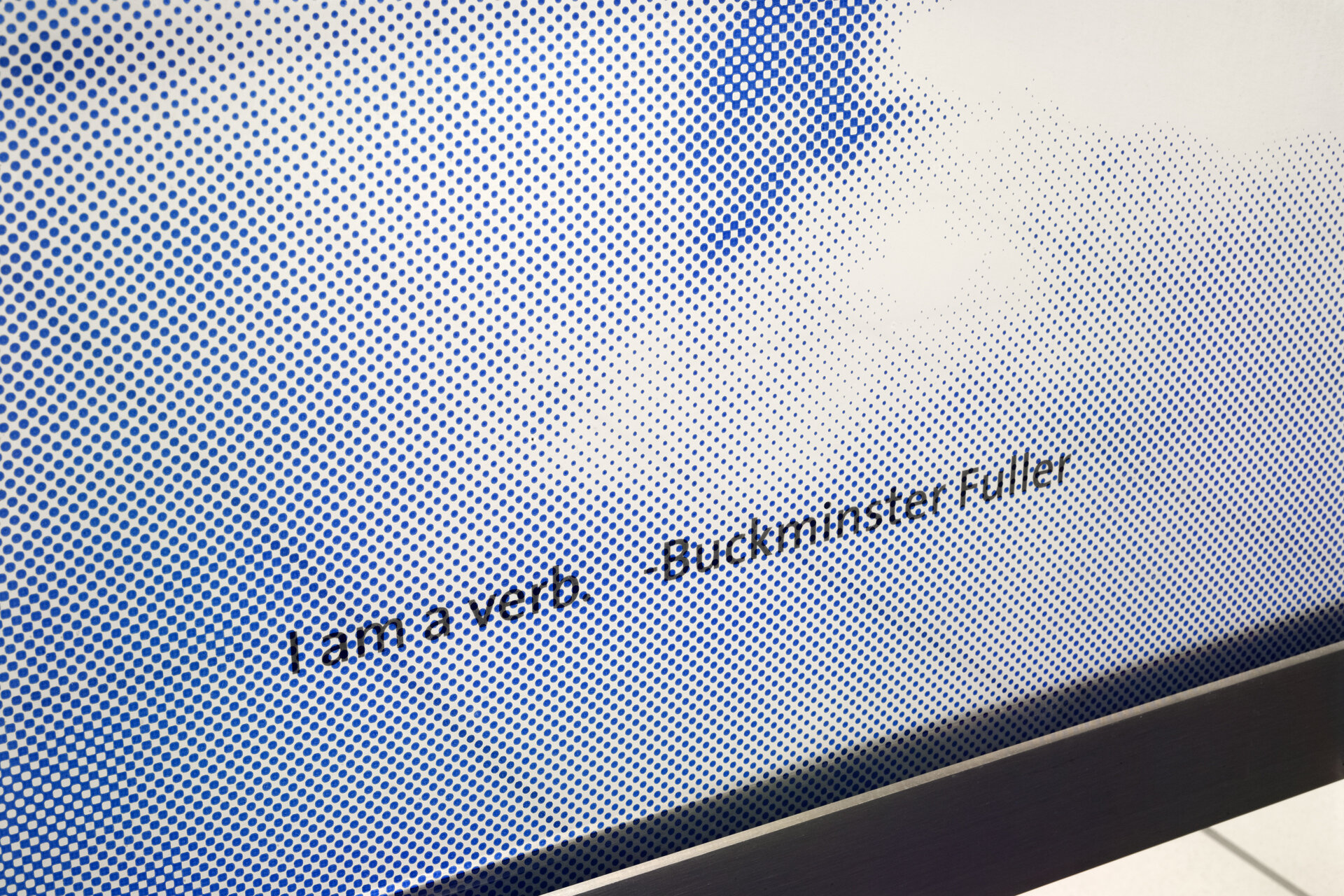

Photos by: Richard Sprengeler
Reflections on Clouds by Jana Harper
Location: Near Gate C24
Clouds are the eternal symbol of all voyaging, of every quest and yearning for home. And as the clouds are suspended faintheartedly and longingly and stubbornly between heaven and earth, the souls of men are suspended faintheartedly and longingly and stubbornly between time and eternity. -Hermann Hesse
I am a verb. -Buckminster Fuller
These two statements have informed and inspired Harper’s work for St. Louis Lambert International Airport. One thing we all have in common is a fascination with the sky. Clouds are of universal interest and their significance and meaning is wide open to interpretation. Air travel enables us to experience a shift in perspective and view clouds at a thrilling proximity. Clouds are never static; they are in constant flux. This makes them the perfect metaphor for travel and voyaging. Like humans in Buckminster Fuller’s view, clouds are verbs -- signs of ongoing action and transformation, departure and passage.

